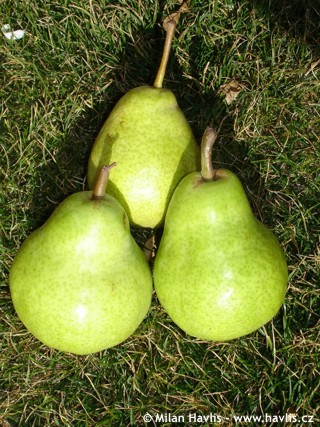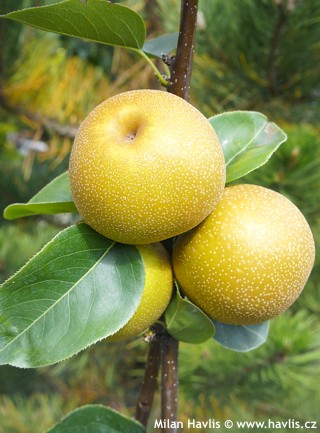CURRENTLY IN STOCK:
Alexander Fleming is a fully double perennial peony variety introduced in 1950 and achieved by crossing Bunker Hill and Sarah Bernhardt. As it was named after a doctor who invented penicillin its variety name often has Dr. at the beginning. The flowers are medium pink, fragrant, large and heavy, and ...

V - VI

0,8 - 1m

0,5 - 1m

full sun

for zone 5+6

for zone 7
Bowl of Beauty is a fantastic perennial peony. The name not only says how gorgeous this variety is but also refers to the flower shape which is Japanese anemone-type: rounded at the bottom, not opening too wide, with a rich centre. The lower petals are magenta pink and contrast beautifully with the ...

V - VI

0,8 - 1m

0,5 - 1m

full sun

4 (down to -34°C)

for zone 5+6

for zone 7
Another coral coloured perennial peony comes from the same breeders as its sister seedling Coral Charm. Its name is Coral Sunset and it fully describes its colour beauty. The flowers are semi or fully double, rich salmon to coral pink with light yellow shades that appear apricot orange in afternoon ...

V - VI

0,6 - 0,8m

0,5 - 1m

full sun

4 (down to -34°C)

for zone 5+6

for zone 7
Edulis Superba is a perennial peony that could well be a grandma of many modern hybrids. This beauty is more than 100 years old and is still in high demand. It produces large, strongly scented, double flowers of medium to deep pink colour. Its stems are 80-100 cm tall and annually hold a massive num ...

VI - VI

0,8 - 1m

0,5 - 1m

full sun

4 (down to -34°C)

for zone 5+6

for zone 7
Enchanting Pink Elsa is a perennial peony from a Dutch series Fabulous Flowers®. It produces large, bowl-shaped, semi-double, fragrant flowers with pastel pink petals and numerous creamy white to light butter yellow dwarf sepals in the centre. Flowers appear from late May, atop 70-80 cm tall st ...

V - VI

0,7 - 0,8m

0,5 - 1m

full to partial sun

4 (down to -34°C)

for zone 5+6

for zone 7
Festiva Maxima is an award-winning perennial peony with large, 12-17 cm wide, fully double flowers with snow white petals that exhibit occasional, thin, purple red highlights. Flowers are strongly fragrant and come out for 4-6 weeks in mid June atop about 60-80 cm tall, strong stems which usually do ...

VI - VII

0,6 - 0,8m

0,6 - 0,8m

full sun

3 (down to -40°C)

for zone 5+6

for zone 7
Charlie's White is an exceptionally gorgeous herbaceous peony bred by Charles Klehm in 1951. Its flowers are medium sized, fully double and beautifully formed with pure white petals around a compact head of almost linear petaloides which are light yellow as the flower opens up and turn as white as t ...

V - VI

0,6 - 0,8m

0,5 - 1m

full sun

4 (down to -34°C)

for zone 5+6

for zone 7
Karl Rosenfield is both a variety name and the breeder's name of this gorgeous perennial peony from 1908. It produces large, fully double, rich purple red (but not warm red) flowers from late May. Flowers appear atop 80-90 cm tall stems from late May. Deciduous leaves are rather thick, deep green, ...

V - VI

0,8 - 1m

0,5 - 1m

full sun

4 (down to -34°C)

for zone 5+6

for zone 7
This perennial peony has a name which often gets misspelled with so many h’s and r’s. It is a beautiful variety forming a robust bush, freely flowering from end June until July. The flower heads are extra large, composed of many rosy pink petals with ruffled, silvery margins. It is fragr ...

VI - VII

0,8 - 1m

0,8 - 1m

full sun

4 (down to -34°C)

for zone 5+6

for zone 7
Shirley Temple (1928-2014) was an American actress and diplomat of great importance to former Czechoslovakia because in the years 1989-1992 she was a US ambassador here. Her name was chosen for a beautiful variety of perennial peony which boasts fully double, white flowers with an occasional purple ...

V - VI

0,6 - 0,8m

0,5 - 1m

full sun

for zone 5+6

for zone 7
Sorbet belongs to the most popular of perennial peonies. It produces large, fully double flowers of rich pink colour with creamy beige of very light pinkish-white crinkled sepals in the middle. They come out already in late May on 60-70 cm tall stems. Deciduous leaves are mid green, divided, and eme ...

V - VI

0,6 - 0,8m

0,5 - 1m

full sun

4 (down to -34°C)

for zone 5+6

for zone 7
Pecher is an alternative and, to be honest, also an easier-to-remember name of a perennial peony Noémi Demay. It was bred by a French painter and botanist Jacques Colt and introduced in 1867. It boasts large, fully double flowers which are like apple blossoms – open pink and mature to almost w ...

V - VI

0,6 - 0,7m

0,6 - 0,8m

full sun

for zone 5+6

for zone 7
Bartzella is considered the very first yellow flowering itoh peony. It produces rich, warm yellow flowers whose petals have a scarlet red flame at its base which gives the flower a feeling of a deeper colour. They are fully double and fragrant. They appear later than tree peony flowers but before th ...

V - VI

0,8 - 1m

0,5 - 1m

full to partial sun

5 (down to -29°C)

for zone 5+6

for zone 7
Tree peonies are beautiful, woody shrubs. Unlike the perennial type, these make woody branches that slowly form a low, mounding shrub.
Flowers are large, often double or full, of all possible colours – white, cream, yellow, orange, various shades of pink, purple and red, even violet. Leaves a ...

V - VI

0,5 - 1m

0,5 - 1m

full to partial sun

5 (down to -29°C)

for zone 5+6

for zone 7
Fernleaf peony is a collector’s choice. This perennial peony is a true gem in any rockery or garden bed. It emerges in early spring with fern-like, finely divided, cut leaves that form a fluffy tuft from which comes out a spherical bud that will open into a lovely flower. It needs warm and sun ...

IV - V

0,2 - 0,4m

0,3 - 0,5m

full sun

2 (down to -45°C)

for zone 5+6

for zone 7
Heavy Metal is an upright variety of switch grass with pale green leaves with steel blue hues. In late summer appear fine, tan inflorescences which never overgrow the foliage level completely, and dance in the wind with the leaf tips. Young plants are columnar and the older and thicker the clump get ...

VIII - X

1 - 1,5m

0,8 - 1m

full sun

5 (down to -29°C)

for zone 5+6

for zone 7
Prairie Sky is considered the bluest among the very few switch grass varieties offering blue-green colour. Its flat, 1-2 cm wide leaves are upright, only tips are weeping. From late summer appear taller stems with large, sandy beige inflorescences showing off just above the foliage level.
Switch g ...

IX - X

1,3 - 1,8m

1 - 1,5m

full sun

5 (down to -29°C)

for zone 5+6

for zone 7
Chinese fountain grass is an elegant feature to every garden. It has mid to dark green linear leaves growing in a thick cluster forming a shape of a fountain. From midsummer it produces yellow-green spike-like flowers which look like bottlebrushes. They are beige with some purple red overlay. Hameln ...

VIII - IX

0,5 - 0,6m

0,6 - 0,8m

full sun

5 (down to -29°C)

for zone 5+6

for zone 7
Husker Red is a beardtongue cultivar emerged as the result of targeted selection within a breeding programme at the University of Nebraska. Its creator, Dr. Dale Lindgren, originally a mathematician, later became a respected horticultural expert. In 1983, he discovered among P. digitalis seedlings a ...

VI - VII

0,8 - 1,2m

0,3 - 0,5m

full sun

3 (down to -40°C)

for zone 5+6

for zone 7
Blue Spire is a hybrid between two types of perovskia. It was first introduced to RHS in 1961 and since late 80´s it has been in cultivation in most of the world with mild climate. It is a very hardy plant originally found in Central Asia (Afghanistan, Pakistan) but is successfully grown even furthe ...

VII - IX

0,6 - 1,2m

0,5 - 1m

full sun

4 (down to -34°C)

for zone 5+6

for zone 7
LACEY BLUE is a stunning cultivar of Russian sage from England, celebrated for its abundant flowering, compact habit, and distinctive foliage. The blooms resemble tiny slippers, they are of intensely violet-blue colour and emerge from deep violet buds that appear as early as June. Though true f ...

VII - IX

0,4 - 0,6m

0,5 - 0,8m

full sun

5 (down to -29°C)

for zone 5+6

for zone 7
Prime Time is a standout among Russian sages, bred by perennial specialist Hans Hansen of Walters Gardens in the United States. Compared to other cultivars, it impresses with early flowering, a compact habit, and exceptionally dense inflorescences. The flowers resemble tiny slippers in rich violet-b ...

VII - IX

0,6 - 1m

0,6 - 1m

full sun

4 (down to -34°C)
Amur Cork Tree is a beautiful specimen tree native to a large area around the Amur River in N.E. Asia - Manchuria, the Amur region in Russia, and Mongolia. Since the winter temperatures can drop to -40 °C there, no wonder that it is popular especially in countries with colder climates where it is pl ...

8 - 15m

8 - 15m

full sun

3 (down to -40°C)

for zone 5+6

for zone 7
Lemoine’s mock orange is most striking for its fragrance – sweet and jasmine‑like, filling the whole garden, though not as overpowering as that of P. coronarius. The flowers have four white petals, 2–3 cm across, arranged in terminal clusters of three to seven. Flowering begins in the first te ...

VI - VII

1,5 - 2m

1,5 - 2m

full to partial sun

5 (down to -29°C)

for zone 5+6

for zone 7
Narrow-leaved mock privet is another typical plant of so-called macchia vegetation found in dry and hot, rocky slopes of South Europe, i.e. plants which cope extremely well with long-lasting drought and are usually unattacked by wild animals. This mock privet has narrowly elliptic to lance-shaped, 4 ...

1,5 - 3m

1,5 - 3m

full sun

7 (down to -23°C)

for zone 5+6

for zone 7
Media mock privet bears evergreen, opposite, 3-4 cm long, broadly elliptic, very dark green, leathery, and glossy leaves. In mid or late spring appear profusion if tiny, insignificant, creamy white flowers followed by small, blue-black, spherical fruit which recalls tiny balls of black pepper when f ...

3 - 4m

2 - 4m

full sun

7 (down to -23°C)

for zone 5+6

for zone 7
...

IV - V

0,1 - 0,1m

0,5 - 0,8m

full sun

4 (down to -34°C)

for zone 5+6

for zone 7
Early® White is one of the great EARLY START™ summer phlox. From about mid June appear large panicles of numerous snow white flowers, opening continuously for almost 2 months. Once the main panicle has finished flowering, remove it to encourage formation of smaller ones along the stems. T ...

VI - VII

0,3 - 0,4m

0,3 - 0,4m

full to partial sun

4 (down to -34°C)

for zone 5+6

for zone 7
Emerald Cushion Blue is a compact moss phlox with lavender violet, small flowers which open on large, emerald green cushions of evergreen leaves from late April. This phlox makes a good groundcover in almost no time, however, for good habit, dense growth and to eliminate bare, woody stems we recomme ...

IV - V

0,2 - 0,2m

0,5 - 1,5m

full sun

2 (down to -45°C)

for zone 5+6

for zone 7
PURPLE EYE FLAME is another perennial phlox from the FLAME series developed by a phlox specialist Gosen Bartels from the Netherlands. It bears bright purple pink flowers with pale to almost white centres. They are about 3 cm across, sweetly and spicy fragrant, composed in rounded to conical terminal ...

VI - VIII

0,5 - 0,6m

0,5 - 1m

full to partial sun

4 (down to -34°C)

for zone 5+6

for zone 7
David's photinia / Chinese stranvaeasia is an evergreen shrub whose close relative is a garden hybrid photinia Red Robin. It comes from China and Vietnam and has better cold resistance and narrower leaves. They are deep green and glossy but emerge dark burgundy red in the spring. Before autumn some ...

V - VI

1,5 - 4m

1,5 - 3m

full sun

5b (down to -27°C)

for zone 5+6

for zone 7
MAGICAL VOLCANO is a new photinia bred by Peter R.Kolster from the Netherlands in 2009. It is a cross between popular Fraser’s hedging photinia and Chinese photinia serratifolia. It is renowned for extremely serrated leaf margins, compact growth, and longer lasting colour of new shoots. It was ...

V - V

2 - 3m

1,5 - 2m

full to partial sun

7 (down to -23°C)

for zone 5+6

for zone 7
Taiwanese photinia is renowned for notably narrower leaves as opposed to Chinese photinia. Those are deep green, narrowly lance-shaped, and glossy. They emerge coppery red in spring, and in autumn many of older leaves turn scarlet red or light maroon, some plants may gain these shades all over.
It ...

VI

1,5 - 4m

1,5 - 4m

full to partial sun

7 (down to -23°C)

for zone 5+6

for zone 7
PINK CRISPY photinia is a drama at first glance. Exceedingly showy foliage reveals creamy white variegation on dark green, slightly undulated, gently serrated, and broadly oval to obovate, evergreen leaves. And the real extravaganza show kicks off when new leaves emerge. They are so intensely pink y ...

2 - 4m

1,5 - 3m

full to partial sun

6b (down to -21°C)

for zone 5+6

for zone 7
Chinese photinia is a species which is less common in trade and almost nonexistent in European nurseries. Reason being that all European encyclopedias rate it much less winter hardy than David’s or Fraser’s photinia which are very popular evergreen shrubs used for hedges in zones 6 and h ...

1,5 - 2m

1 - 1,3m

full sun to shade

7 (down to -23°C)

for zone 5+6

for zone 7
Oriental photinia is a heavily underutilized hardy shrub that is still very rare both in gardens as well as European garden centres. This deciduous shrub is native to Korea, China, and Japan. Although the evergreen sisters of this photinia are more commercially successful we would like to introduce ...

VI - VI

2 - 3,5m

2 - 3,5m

full to partial sun

4 (down to -34°C)

for zone 5+6

for zone 7
Camilvy is one of the new selections of Fraser´s photinia. It has darker red young leaves compared to Red Robinwhose leaves are more or less coppery red. They are large and glossy and turn very dark green in summer. They are evergreen and have wavy margins. In mid spring medium-sized panicles of cre ...

IV - V

2 - 4m

1 - 2m

full to partial sun

7 (down to -23°C)

for zone 5+6

for zone 7
Devil’s Dream is a German variety of Fraser’s photinia bred and selected by Manfred Behrens in his nursery in Bad Zwischenahn located in the middle of a famous nursery region Ammerland. With so many photinias in the market today I would use comparison with two bestsellers to describe it ...

IV

1,5 - 3m

1 - 1,5m

full to partial sun

7 (down to -23°C)

for zone 5+6

for zone 7
Some time ago crossing of two species of photina resulted in an extremely successful and attractive plant: Fraser photinia. It is called Red Robin and in countries with mild winters it is one of the top favourites for evergreen hedges. But now we are introducing a new plant which, though based on th ...

0,5 - 0,8m

0,5 - 0,8m

full to partial sun

8 (down to -18°C)

for zone 5+6

for zone 7
Red Robin is a New Zealand selection of Fraser's photinia which is considered the first and also possibly the most successful Fraser's photinia variety of 20th century. After 20 years from its introduction it received the Award of Garden Merit (AGM) by the English Royal Horticultural Society (RHS) f ...

V

2 - 4m

1 - 2m

full to partial sun

7 (down to -23°C)

for zone 5+6

for zone 7
Red Robin is a New Zealand selection of Fraser's photinia which is considered the first and also possibly the most successful Fraser's photinia variety of 20th century. After 20 years from its introduction it received the Award of Garden Merit (AGM) by the English Royal Horticultural Society (RHS) f ...

V

2 - 4m

1,5 - 3m

full to partial sun

7 (down to -23°C)

for zone 5+6

for zone 7
Carré Rouge is a French selection of Fraser's photinia from Red Robin variety. It originated in Nantes and produces smaller leaves of intensely red colour when young, maturing to deep green, yet keeping the top leaves crimson or wine red. New leaves with red colour emerge at least twice a year: in ...

IV

1,5 - 3m

1 - 2m

full to partial sun

7 (down to -23°C)

for zone 5+6

for zone 7
RED LIGHT is a Dutch selection of popular photinia from 2013, bred and introduced by Alexander van Oploo, EU patent 32555. It has distinctively different colour of new twigs - they are bright red (as opposed to common wine red), and perfectly complement deep burgundy red colour of newly emerging lea ...

IV

1,5 - 2,5m

1,5 - 2m

full to partial sun

7 (down to -23°C)

for zone 5+6

for zone 7
Red Baron is a non-patented (in 2011) variety of common ninebark with deep burgundy red or almost black-red 3-lobed leaves, which appear early in the spring. They have more tones of red as opposed to their parent variety Diabolo from it was found as a selection and called Red Baron later. Profusion ...

V - VI

1,5 - 2,5m

1 - 2m

full sun to shade

3 (down to -40°C)

for zone 5+6

for zone 7
TINY WINE® is a dwarf ninebark variety growing only about half the size of the species i.e. about 1.5m. It produces a profusion of small leaves which are deep burgundy red overall, and dark green inside the shrub. They are serrated at margins and turn deep orange and red in autumn. In late spri ...

V - VI

1 - 1,5m

1 - 1,3m

full to partial sun

3 (down to -40°C)

for zone 5+6

for zone 7
RASPBERRY LEMONADE™ belongs among compact ninebark varieties with a fine texture of small leaves. They are deciduous, about haf the size of the species, conspicuously serrated (notched) at margins, and three-lobed like, for example, fire maple leaves. In early spring they emerge almost yellow ...

VI

1 - 1,5m

1 - 1,5m

full to partial sun

2 (down to -45°C)

for zone 5+6

for zone 7
Vivid is one of the richest pink obedient plant varieties producing strictly upright, non-falling, square stems with 10-15 cm long spikes of 4 rows of funnel-shaped flowers. They are pure pink with purple pink veins which make them glow like neon. They open from midsummer until about mid September. ...

VIII - IX

0,6 - 0,8m

0,3 - 1,5m

full to partial sun

3 (down to -40°C)

for zone 5+6

for zone 7
Acrocona is a beauty among Norway spruces. It is a smaller variety with picturesque cones at the tips of the branches. They are small, rich raspberry red and appear from May. Later they turn brown as they mature.
Needles are medium short, deep green, and prickly. The habit is somewhat narrowly con ...

V - VI

3 - 5m

3 - 4m

full sun

3 (down to -40°C)

for zone 5+6

for zone 7
Little Gem is a true dwarf among dwarf conifers. It is a sport of Nidiformis Norway spruce with mid to pale green, very short needles and very compact habit. The plant keeps very dense and needs no shaping to look nice. Naturally it forms a globose or mounded shape.
Growing dwarf conifers is very ...

0,3 - 0,6m

0,4 - 0,8m

full to partial sun

3 (down to -40°C)

for zone 5+6

for zone 7
Caucasian spruce is an attractive conifer with an interesting habit. Lateral branches grow horizontally first, later they rise a bit upwards in an angle of about 45° while new growths are slightly drooping. Aureospicata is a variety with bright yellow new foliage that lasts for as long as 6 weeks.
...

8 - 15m

4 - 6m

full sun

5 (down to -29°C)

for zone 5+6

for zone 7
Blue Diamond is a true jewel. This conifer is a variety of Colorado spruce with intensely blue coloured needles with silver overlay. They are quite prickly and evergreen. It grows about 15 cm per year, and only 10 cm upwards making about 1m tall plant in 10 years time. It is well branched from the b ...

4 - 7m

1 - 3m

full sun

3 (down to -40°C)

for zone 5+6

for zone 7
Forest Flame is a variety that belongs to floribunda group. It has deep green, elliptic, pointed, glossy leaves that emerge orange-bronze to fiery-orange coloured. Flowers are small, vase-shaped, compound in 10-15 cm long, hanging racemes. Buds are orange-red. We recommend dead-heading spent flowers ...

IV - V

0,8 - 1,5m

0,8 - 1,5m

full to partial sun

5 (down to -29°C)

for zone 5+6

for zone 7
Bonfire is a new variety of pireis which will be loved by those of you, who dislike the pendent habit of its flower racemes: this novelty holds it flower strictly upright, like lined-up soldiers. They are deep burgundy red and appear from early autumn. The flowers themselves may come as a surprise b ...

III - IV

0,5 - 1,5m

0,5 - 1m

full to partial sun

5b (down to -27°C)

for zone 5+6

for zone 7
Flaming Silver is a fantastic variety of a lily-of-the-valley shrub. This evergreen gem shows narrowly lance-shaped, evergreen leaves that are dark green in the middle and creamy white along the margins. New foliage is vivid red or purple-pink. This colour remains for a few weeks before it matures t ...

III - IV

1 - 1,5m

0,5 - 1m

full to partial sun

5 (down to -29°C)

for zone 5+6

for zone 7
Growers and fans of lily-of-the-valley shrubs probably know Little Heath variety, but few of them know that there was a selection made some time ago with only green foliage. In my view it is much more elegant since there is no variegation to disturb its beautiful green colour.
Little Heath Green pi ...

0,3 - 1m

0,3 - 1,3m

full to partial sun

5b (down to -27°C)

for zone 5+6

for zone 7
Lustrous green foliage of Valley Valentine pieris complements extraordinary deep rose-pink flowers which come out from late March till early April. They are urn-shaped, sweetly scented, composed in long, pendent racemes, and last for 2-4 weeks. Deadhead spent flowers immediately after flowering so t ...

III - IV

0,8 - 1,5m

0,5 - 1,5m

full sun to shade

5 (down to -29°C)

for zone 5+6

for zone 7
Taiwanese lily-of-the-valley shrub is a botanical species the island of Taiwan which was discovered and first described by the British botanist and plant collector E.H. Wilson. He introduced it in Great Britain in 1918, and 4 years later the Royal Horticultural Society (RHS) awarded it the AGM (Awar ...

III - IV

0,8 - 1,5m

0,8 - 1,5m

full to partial sun

5 (down to -29°C)

for zone 5+6

for zone 7
BREPO® is a very decorative dwarf pine variety. It has bright green, long needles that are thinner than p.nigra but are similarly stiff. It naturally forms symmetrical, mounding shrubs which need no trimming whatsoever. It grows very slowly - only about 5 cm per year. It will look great as a s ...

0,5 - 1,5m

0,5 - 1,3m

full sun

3 (down to -40°C)

for zone 5+6

for zone 7
Compacta Glauca is an arolla pine variety of reduced size. It was selected by C.Frets & Son nursery in Boskoop, the Netherlands, around 1930, in a field of older variety called Glauca which had been known since 1860's. It exhibits much denser and congested growth, and produces about 10 cm long needl ...

3 - 5m

1 - 1,5m

full sun

4 (down to -34°C)

for zone 5+6

for zone 7
If you like Mediterranean umbrella pines but feel sorry that it is too tender for our climate try to have a look at this selection of dwarf Japanese red pine. It is called Alice Verkade and has bright green, soft needles. It is a slow growing plant making only about 7-10 cm per year, forming a beaut ...

1 - 2m

0,5 - 1,5m

full sun

5 (down to -29°C)

for zone 5+6

for zone 7
Rocky Mountains white pine is a North American pine species whose origin ranges through the Rocky Mountains of Alberta in Canada down to Colorado, USA. It has distinctively flexible young twigs and soft, blue-green to silvery-blue needles. Female cones are yellow-brown, 8-15 cm long, and are borne a ...

5 - 9m

1 - 2,5m

full sun

4 (down to -34°C)

for zone 5+6

for zone 7
BAMBINO® is another beautiful dwarf hybrid pine, following success of its forerunners Marie Brégeon and BREPO®. It has medium to dark green, 3-4 cm long needles that recall those of pinus mugo. The plant naturally forms symmetrical, mounding shrubs which need no trimming whatsoever, and gr ...

0,5 - 0,8m

0,8 - 1,3m

full sun

4 (down to -34°C)

for zone 5+6

for zone 7
Bosnian pine is one of the posh pines with a typical, almost perfect conical shape. Compact Gem is an excellent choice for even the smallest of gardens as it grows slowly and does not exceed 3m when fully mature.
Needles are born in two’s, they are deep green, glossy and hard, always vertica ...

1 - 3m

0,5 - 1m

full sun

5 (down to -29°C)

for zone 5+6

for zone 7
Pine trees are superb trees which grow in a wide climate scale - from cold northern countries to hot coastal sites. They are probably most beautiful in their natural environment.
Satellit is a narrowly columnar variety of Bosnian pine. Thanks to slow growth and limited size it is suitable for smal ...

3 - 6m

1 - 1,5m

full sun

5 (down to -29°C)

for zone 5+6

for zone 7
Ammerland is a very decorative, medium-sized western pine. These pines come from western parts of North America but this variety was bred in German Jeddeloh.
Its needles are borne in whorls of 5. They are mostly erect, stiff, blue-green, long. The shape of this pine is rather conical, looking bett ...

3 - 5m

full sun

5 (down to -29°C)

for zone 5+6

for zone 7
Carsten’s Wintergold is a selection of very popular Wintergold with stunning winter colour. The needles are deep green from mid spring until early autumn. Then they begin turning yellow and from end autumn until the last cold days of spring they are vivid yellow. This colour is unbeatable so f ...

0,3 - 0,6m

0,3 - 0,6m

full sun

3 (down to -40°C)

for zone 5+6

for zone 7
Columbo is a mountain pine that has absolutely nothing to do with inspector Colombo. Its original name given in 1984 was Columnaris and it perfectly described its columnar habit. It grows slowly and dense, bears short, dark green, stiff needles borne in pairs. Thanks to its compact habit and columna ...

1 - 3m

0,5 - 1,3m

full sun

3 (down to -40°C)

for zone 5+6

for zone 7
Would you like a gnom for your garden? Not the one from plaster, a living one – a dwarf pine called the same name = Gnom. This one is very beautiful, slow and dense growing with short to medium sized, dark green needles. It is mound-forming when young, making a shrub about 60 cm tall and almos ...

1 - 2,5m

1 - 2,5m

full to partial sun

3 (down to -40°C)

for zone 5+6

for zone 7
Green Tower is a fastigiate and dwarf variety of Austrian pine. It was found as a seedling, possibly of Pyramidalis variety, by Martin Zimmer in late 1990's. It has about 10 cm, stiff, dark green needles borne in whorls of 2. It grows slowly - 20 cm per year and makes a very narrow tree which will f ...

2 - 3m

0,5 - 1m

full sun

4 (down to -34°C)

for zone 5+6

for zone 7
After a huge success with BREPO® variety, a breeder of pines from Switzerland Henri Bregeon comes up with another dwarf pine variety, this time called Marie Bregeon. It is a result of a controlled crossbreeding of pinus nigra and pinus densiflora, both of which were H.Bregeon’s own select ...

0,5 - 1m

0,5 - 1m

full sun

5 (down to -29°C)

for zone 5+6

for zone 7
Oregon Green is a very beautiful addition to the family of small to mid-sized pine trees. It was found as a seedling by Morris Van Meter in his nursery in Boring, Oregon, USA, in early 1990's. It is easily distinguished by its stiff habit with erect branches where needles are borne in such density a ...

4 - 6m

3 - 4m

full sun

4 (down to -34°C)

for zone 5+6

for zone 7
Austrian (black) pine was first classified by Austrian botanist Johann Arnold in 1785. It is a hardy tree which escaped Austria in early 20th century, and can now be found all around Europe, down to Turkey, and in North Africa. Hard to say if Mother Nature needed a stronger substitute for more tende ...

10 - 30m

6 - 8m

full to partial sun

3 (down to -40°C)

for zone 5+6

for zone 7
You needn’t be a specialist to fall in love with this Japanese white pine at the first sight; this is probably one of the top ones mostly sought after by bonsai-makers, though. Needles of Negishi are 5-6 cm long, dark green with silvery grey film which gives it a unique, almost turquoise appea ...

0,5 - 2m

0,5 - 2m

full sun

4 (down to -34°C)

for zone 5+6

for zone 7
If you like pines with soft needles, white pines are the best choice. Radiata is an old variety from 1923 which is a slow grower with silvery blue-green needles decorated with green underneath. The appearance is fluffy and you feel like touching it everytime you pass it.
Radiata forms a mounding h ...

1,5 - 4m

1,5 - 2,5m

full sun

3 (down to -40°C)

for zone 5+6

for zone 7
Moseri is a dwarf variety of Scots Pine from Moser Nursery in Versailles, France, from 1900. It has long, slightly twisted needles of soft green colour in summer and rich golden yellow in winter. It grows very slowly (8-12 cm per year) and naturally forms dense, broadly pyramidal shrubs with rounded ...

2 - 3m

1,5 - 2,5m

full sun

3 (down to -40°C)

for zone 5+6

for zone 7
Watereri is a small, slow-growing pine which is also commercially known under the name “Nana” – a typical name for many dwarf plants. Its needles are borne in pairs, dark green with only a hint of blue-green in summer, and more bluish in cold months of autumn and winter. It is very ...

2 - 4m

1 - 4m

full sun

2 (down to -45°C)

for zone 5+6

for zone 7
Uncinata is a subspecies of mountain pine. Its main difference from dwarf mountain pine is a central leader which helps it make a tree character. Also, this pine is much taller in full maturity as opposed to common mountain pine, forming a widely pyramidal habit, slightly irregular. Uncinata is comm ...

10 - 20m

3 - 6m

full sun

2 (down to -45°C)

for zone 5+6

for zone 7
Himalayan pine is a tree that many pine growers would love to have in their garden, however, its mature size will not allow growing it in small gardens. That was probably the reason why in 1983 a new selection called Densa (or Densa Hill recently) was introduced and immediately gained much attention ...

4 - 6m

1 - 1,5m

full sun

5 (down to -29°C)

for zone 5+6

for zone 7
Some trees have identity crisis and scientists are trying to trace up their true origin. As these efforts often end up in argumentative sessions we tend to choose the easiest possible explanation. In the case of this London plane tree we rather believe it comes from Cenozoic platanus aceroides and w ...

5 - 30m

4 - 20m

full sun

4 (down to -34°C)

for zone 5+6

for zone 7
Alphen’s Globe has been a sought after small tree in the last decade or so since it offers beauty of its parent – plane tree - but much smaller dimensions which make it suitable even for small gardens.
Its deciduous leaves are large – 20 cm wide, glossy green, with 5 lobes. Fruits ...

3 - 5m

2 - 3m

full sun

5 (down to -29°C)

for zone 5+6

for zone 7
Aurea Nana is a dwarf conifer with golden-yellow, scale-like leaves. It belongs to cypress family and is known under its other name – oriental thuja. It grows slowly, keeps it compact shape and dense habit and is suitable for cultivation on short stems.
Platycladus is a trouble-free conifer w ...

1 - 2m

0,5 - 1m

full to partial sun

5b (down to -27°C)

for zone 5+6

for zone 7
Pygmaeus is a dwarf bamboo species native to Japan. It is often used as lawn alternative as it is a fast and densely growing perennial that can create a nice groundcover in no time. Within 10 years it can take up a space of about 3x3 meters. It has possibly the smallest leaves of the whole group. Th ...

0,2 - 0,4m

full to partial sun

5b (down to -27°C)

for zone 5+6

for zone 7
This bamboo is a popular groundcover. Its mid-sized leaves are 10-14 cm long and 1-1.5 cm wide, and distinctly white variegated. It comes from Japan.
It is a vigorous grower that has wild root system. If you want to keep it in a certain area of your garden we recommend using root barriers. Leaves a ...

0,3 - 0,5m

0,5 - 1,3m

full to partial sun

6b (down to -21°C)

for zone 5+6

for zone 7
...

V - VII

0,3 - 0,4m

0,3 - 0,4m

full to partial sun

4 (down to -34°C)

for zone 5+6

for zone 7
Common polypody is a usual fern of mild and colder parts of Europe. It is evergreen and has about 30-40 cm long, thin stalks with mid green leaflets with rounded ends.
It grows best in semi-shade but can be cultivated in full sun or full shade as well. It grows in woodland leafmould or epiphytical ...

0,3 - 0,4m

0,3 - 0,4m

semi-shade to shade

3 (down to -40°C)

for zone 5+6

for zone 7
Red Ace is a hot card for this game among cinquefoil varieties. It offers medium-sized flowers that change from red to fiery orange. They come out from June until September. Palmately divided leaves are small, medium green, not very showy. This variety grows quite compact and is suitable for small g ...

VI - IX

0,3 - 0,6m

0,5 - 1m

full to partial sun

3 (down to -40°C)

for zone 5+6

for zone 7
BELLA SOL cinquefoil makes about 2.5 cm large flowers of rich orange colour which does not fade. Blooming begins in June and continues until September. The plant differs from a similar variety Orange Tip Top by more compact, almost dwarf grow. It is still too new to estimate its ultimate site, still ...

VI - IX

0,3 - 0,5m

0,3 - 0,6m

full to partial sun

3 (down to -40°C)

for zone 5+6

for zone 7
This flowering cherry is a cross between prunus sargentii and prunus subhirtella, both of which are flowering cherries. In early spring it produces masses of semi double light pink flowers that can withstand a few degrees of late frosts since they start blooming in early April already.
Deciduous l ...

IV - IV

3 - 6m

2 - 4m

full sun

5 (down to -29°C)

for zone 5+6

for zone 7
Originally named Snofozam after it was put to trade this hybrid weeping cherry received a nicer name Snow Fountains® which tells everything. In the spring it produces masses of lightly scented pure white flowers along plentiful of weeping branches that may run almost to the ground unless pruned ...

IV - V

1,5 - 3m

1 - 3m

full sun

4 (down to -34°C)

for zone 5+6

for zone 7
Aprikose von Nancy, De Nancy, Gros Peche or simply Nancy Peach is an old and proven variety of apricots from 1709. It originated in France and is valued for production of large fruit of excellent taste and good garden performance. The fruit is almost rounded, deep orange, red flushed, the flesh is a ...

IV

3 - 4m

2 - 4m

full sun

5 (down to -29°C)

for zone 5+6

for zone 7
Bulida is a Spanish apricot tree variety from 1940. It is very hardy and a heavy cropper. The fruit is large, firm, yellow-orange without a red blush, very sweet, free-stone, and juicy with melting flesh. Maturing time is usually from early August, in good summers the fruit may ripen already in from ...

IV - IV

3 - 5m

2 - 4m

full sun

5 (down to -29°C)

for zone 5+6

for zone 7
Harcot is a Canadian breeding of apricots made by Richard Layne from Harrow in Ontario. It is a very hardy and tasty apricot variety from 1978. The fruit is medium-sized with orange and red skin, ripening from late July. The flesh is sweet and juicy, freestone, and the stones have sweet kernels. Fru ...

IV - IV

3 - 5m

2 - 4m

full sun

5 (down to -29°C)

for zone 5+6

for zone 7
Harlayne is a Canadian breeding of apricots made by Richard Layne from Harrow in Ontario. It is a very hardy late apricot variety producing fruit from about mid August in CE climate. The fruit is deep orange red flushed, almost rounded, sweet, aromatic, and freestone. Fruit is great for fresh consum ...

3 - 5m

2 - 4m

full sun

4 (down to -34°C)

for zone 5+6

for zone 7
Polonais is a late apricot tree variety from Provence in France. It produces rounded to oval fruit of golden yellow skin with orange cheeks and some red freckles. The flesh is sweet and juicy, mildly aromatic and medium firm which makes it ideal for making preserves apart from eating fresh. Maturity ...

3 - 5m

2 - 4m

full sun

5b (down to -27°C)

for zone 5+6

for zone 7
Imola is a town in Italy renowned for the race track The Autodromo Internazionale Enzo e Dino Ferrari. It is close to Bologna in a region called Emilia-Romagna, possibly the most important Italian region for growing fruit trees. Reale d’Imola is an apricot tree which originated there in one of ...

IV

4 - 6m

2 - 4m

full sun

5b (down to -27°C)

for zone 5+6

for zone 7
Burlat is an early variety of sweet cherries. The fruit is vivid to dark red, mid-sized or large, very sweet and juicy, with medium firm flesh. As it is very precocious it is not vermicular.
It is partly self-fertile but benefits from being pollinated by another early cherry. It likes slightly acid ...

IV - V

3 - 7m

full sun

for zone 5+6

for zone 7
Dönissens Gelbe is a super sweet and aromatic variety of yellow sweet cherries from Germany. It produces masses of medium-sized, juicy fruit in July. Its colour brings one advantage – it is usually untouched by birds who relish on red-coloured cherries.
It is self-sterile and needs a pollina ...

IV - IV

3 - 5m

3 - 4m

full sun

5 (down to -29°C)

for zone 5+6

for zone 7
...

3 - 6m

2 - 4m

full sun

for zone 5+6

for zone 7
Hedelfingen is a very good variety of sweet cherry. It bears medium-sized fruit in early summer. Fruit is sweet and crunchy and partly resistant to cracking. It gains its colour about a week before it is truly mature. It needs protection from cherry-worms.
It is not self-fertile and needs a pollina ...

IV - IV

3 - 6m

3 - 4m

full sun

5 (down to -29°C)

for zone 5+6

for zone 7
Kordia is a Czech variety of sweet cherry. It produces masses of deep red fruit in the first half of July. The fruit has solid flesh and sweet, delicious flavour. As a late cherry it needs protection from cherry-worms.
It is self-sterile and needs a pollinator nearby to produce fruit. The best vari ...

IV - IV

4 - 6m

3 - 4m

full sun

for zone 5+6

for zone 7
Moreau is a French cherry cultivar from the 19th century, named after the breeder Moreau of Angers (Loire, France). It first appears in the literature around 1880, making it an older, classic bigarreau type. Its fruits are medium‑large to large, round to slightly heart‑shaped, with dark ...

IV

5 - 7m

3 - 5m

full sun

5 (down to -29°C)

for zone 5+6

for zone 7
Morel belongs among old, dark-skinned, midseason sweet cherries of the bigarreau type. The fruits are medium to large, round, with a dark red to almost black skin. The flesh is firm, juicy, and sweet, with a clean, distinctive flavour suitable for fresh consumption as well as for preserving. Ripenin ...

4 - 8m

3 - 5m

full sun

5 (down to -29°C)

for zone 5+6

for zone 7
Napoleon is a mid-season variety of sweet bigarreau cherry. Its fruit ripens in early July. Fruit is large, heart-shaped, yellow and red, getting deeper red as it matures on the tree. The flesh is aromatic, sweet, and has excellent taste. It needs protection from cherry-worms.
It belongs to the ha ...

IV - V

3 - 6m

full sun

for zone 5+6

for zone 7
This flowering cherry originated in France already in 1700. That is a success to see that a variety so old still finds its place among new and hyper modern selections. Well done! This is a medium sized tree with stunning blossoms. They are pure white, fully double, and appear in profusion from mid A ...

IV - V

6 - 12m

3 - 6m

full sun

5 (down to -29°C)

for zone 5+6

for zone 7
Regina is a late sweet‑cherry cultivar raised at the Jork research station in Germany and prized for its large, dark red to almost black fruits; it is a typical bigarreau cherry – meaty, juicy and sweet‑tart, with a trace of tannin that gives character and structure. The fruits are firm, ...

IV

3 - 8m

2 - 7m

full sun

5 (down to -29°C)
Stella is one the best modern self-fertile varieties of sweet cherries. It comes from Canada and produces reliable crop of large, sweet, very dark red, juicy fruit from end July. Self-fertile means it does not need a pollinating partner and you can have just one tree in the garden and there will alw ...

IV - IV

2 - 2,5m

1,5 - 2m

full sun

5 (down to -29°C)

for zone 5+6

for zone 7
Sunburst is another modern variety of self-fertile sweet cherries. It produces heavy yields of large, dark red, glossy, free-stone fruit of excellent flavour – sweet and juicy. Harvest begins in late July. The fruit is significantly resistant to cracking in rainy weather.
Self-fertile means i ...

4 - 6m

3 - 5m

full sun

5 (down to -29°C)

for zone 5+6

for zone 7
Van is a mid-season variety of sweet cherry. Its fruit ripens in early July. Fruits are large, heart-shaped, deep red, almost black. The flesh is aromatic, sweet, and has excellent taste. It needs protection from cherry-worms.
It is not self-fertile and needs a pollinated for heavy crop. It likes s ...

IV - V

4 - 6m

full sun

for zone 5+6

for zone 7
Victoria is an exceptional sweet cherry of the bigarreau type with a naturally narrower growth, which is why it is often classified among so‑called columnar fruit trees. It produces large, round fruits with dark red to reddish‑brown skin. The flesh is firm, juicy, and sweet, with a pleas ...

IV

2 - 3m

0,8 - 1m

full sun

5 (down to -29°C)

for zone 5+6

for zone 7
Büttners Rote Knorpelkirsche is a great and unique sweet cherry variety from German Halle found already in 1795. In early 2000‘ it was renamed to ALTENBURGER MELONENKIRSCHE which truly does no make its pronunciation any easier.
This cherry produces excellent fruit of unique taste and beautiful ex ...

4 - 6m

3 - 5m

full sun

5 (down to -29°C)

for zone 5+6

for zone 7
Pissardii was the very first variety of purple-leaved cherry plum to reach Europe from the Orient, naturally named after its discoverer. Early in spring, before blackthorns and Japanese cherries begin to bloom, it bursts into a profusion of small, nearly white flowers with purplish calyxes, which fr ...

IV

3 - 7m

3 - 6m

full sun

3 (down to -40°C)
Morellenfeuer is one of the top German sour morello cherries. It bears medium-sized, burgundy-black fruit with dark, juicy flesh that is both sour and light sweet, aromatic, freestone. It is ideal eaten fresh as well as processed in jams, preserves, desserts etc. It is a late variety cropping in Aug ...

IV - V

3 - 6m

2 - 4m

full sun

5 (down to -29°C)

for zone 5+6

for zone 7
Hanna is a dwarf variety of European plum, seemingly made for urban gardens and terraces. It grows compactly, with a crown so neat you could plant it in a pot next to geraniums or any other handsome plant. It’s ideal for small spaces, reaching barely two meters in height. The fruits are medium- ...

1,5 - 2m

1 - 1,5m

full to partial sun

5 (down to -29°C)

for zone 5+6

for zone 7
President is an amazing moyer plum variety of excellent taste and late maturity. Unlike most moyer plums such as Stanley of Jojo which can be picked up as early as in late August, you have to be more patient for President as it ripens in roughly mid September. And as it matures over almost 4 weeks y ...

3 - 6m

2 - 3m

full sun

4 (down to -34°C)

for zone 5+6

for zone 7
Queen Victoria is probably the most popular plum with red skin. It is a heavy cropper, producing typically egg-shaped fruit with yellow skin decorated with numerous red blotches. It is very sweet and juicy, stone-free. The best way to eat them is fresh off the tree, obviously, but they can be proces ...

V - V

2 - 3,5m

2 - 3m

full sun

5 (down to -29°C)

for zone 5+6

for zone 7
Reine Claude d´Oullins is another French variety out of Reine Claude range. It is a greengage with large, spherical fruit of greeny-yellow fruit. It is delicious, sweet and juicy taste, the flesh is attached to the core. It is an early variety that ripens from mid to end of August.
It flowers in Ma ...

V - V

3 - 4m

2 - 4m

full sun

5b (down to -27°C)

for zone 5+6

for zone 7
Stanley is one of the most tasteful and reliable varieties of plums. The fruit is sweet and juicy, though firm. Flesh is orange-yellow, skin is smooth, deep violet-blue. The fruit is excellent fresh as well as canned, high sugar content makes them ideal for drying.
It blooms late in the spring and ...

V - V

2,5 - 6m

2 - 4m

full sun

4 (down to -34°C)

for zone 5+6

for zone 7
Quetsche d’Alsace is one of the oldest European plum varieties that was first described in German Alsace in 1914, hence its name. Still, it is so old and of unclear origin that most producing countries gave it its own name in their own language. We call it Švestka domácí (‘house plumR ...

V - V

3 - 5m

2 - 3,5m

full sun

5 (down to -29°C)

for zone 5+6

for zone 7
Toptaste® is a modern variety of plum tree tolerant of sharka virus. It produces quite large fruit of excellent taste, possibly one of the best – hence its name TopTaste. It is an early variety ripening in September. The plums are oval to rounded, rich blue outside and yellow inside, very ...

IV - V

3 - 4m

2 - 3,5m

full to partial sun

for zone 5+6

for zone 7
The dwarf plum GOLDUST® looks like something out of a fairytale – compact, with a small crown and delicate foliage, perfectly suited to balconies or terraces. It grows to just 1.5 to 2 metres tall yet bears fruit that could rival full-sized trees. The fruits are round to slightly oval, strikingly go ...

1,5 - 2m

1 - 1,5m

full to partial sun

5 (down to -29°C)

for zone 5+6

for zone 7
Mirabelle Ruby is a nearly columnar variety of mirabelle that grows tall and slender, as if reaching for the sky. It reaches a height of about 2.5 to 3 meters while maintaining a compact width of under one meter. The tree produces few lateral branches – its fruits grow directly from the trunk and ma ...

2,5 - 3m

1 - 1,5m

full sun

5 (down to -29°C)

for zone 5+6

for zone 7
Mirabelle de Nancy is a traditional French mirabelle variety, primarily cultivated in the region between the cities of Metz and Nancy. The tree reaches a height of 4 to 6 meters and develops a dense, rounded crown with a slightly irregular growth habit. It blooms in April with delicate white flowers ...

IV - IV

3 - 6m

3 - 4m

full sun

5 (down to -29°C)

for zone 5+6

for zone 7
Novita is a new sensation among cherry laurels. Eventually there is a hardy variety which has benefits of the formerly more tender ones: it grows fast and big, has large leaves of a nice colour, and is surprisingly hardy for a large-leaved cherry laurel. It is a selection of Rotundifolia variety hen ...

V

3 - 6m

1 - 3m

full sun to shade

5b (down to -27°C)

for zone 5+6

for zone 7
Novita is a new sensation among cherry laurels. Eventually there is a hardy variety which has benefits of the formerly more tender ones: it grows fast and big, has large leaves of a nice colour, and is surprisingly hardy for a large-leaved cherry laurel. It is a selection of Rotundifolia variety hen ...

V - V

2 - 5m

1 - 3m

full sun to shade

5b (down to -27°C)

for zone 5+6

for zone 7
Otto Luyken is one of the best known as well the most reliable and the hardiest selection among cherry laurels. Its evergreen pointed leaves are glossy and dark green. In April and May appears a profusion of erect racemes compound of small, creamy white, fragrant flowers followed by blue-black fruit ...

IV - V

1,5 - 3m

2 - 3m

full sun to shade

5 (down to -29°C)

for zone 5+6

for zone 7
If you like cherry laurels, all of them will look boring next to this specialty. Marbled White is an extraordinary variety with creamy white marbled leaves. They are quite large and for the best contrast it should be placed in semi-shade or shade. This shrub has upright, pyramidal growth. Non flower ...

IV - V

1 - 2,5m

1 - 2m

full sun to shade

7 (down to -23°C)

for zone 5+6

for zone 7
Etna® is the queen of laurels. Its bright emerald green leaves are glossy and healthy, slightly curved at the ends and edges which gives the whole shrub added plasticity. New leaves emerge coloured in rich bronze. Etna’s foliage is much more tolerant of winter sun scald than most laurels. ...

IV - V

1,5 - 2,5m

1,5 - 2,5m

full sun to shade

5b (down to -27°C)

for zone 5+6

for zone 7
KLEOPATRA® is a Hungarian cherry laurel variety bred by Dr. Józsa Miklos and introduced in 2007. It forms a compact, graceful shrub or a small tree with spreading branches and dark green, glossy, leathery, evergreen leaves. They emerge coppery orange just like on Etna® variety and can be d ...

IV - V

2,5 - 3,5m

1 - 2m

full sun to shade

5b (down to -27°C)

for zone 5+6

for zone 7
GENOLIA® is an excellent addition to the family of hedging cherry laurels. It comes from Switzerland, and was bred by Pepiniéres de Genolier in 2002. It forms a handsome, columnar, evergreen shrub which requires no pruning to look recent great. Leathery leaves are mid to dark green, narrowly o ...

IV - V

2 - 3m

0,5 - 1m

full sun to shade

for zone 5+6

for zone 7
We are specialists in evergreen plants and offer the widest possible range of hardy, quality plants.
Portugal laurel is a great evergreen plant that is surprisingly hardier that some large-leaved cherry laurels. Origin: S.W.Europe.
This shrub has ovate to elliptic, pointed, mid-sized leaves that ...

V - VI

2 - 5m

2 - 4m

full to partial sun

7 (down to -23°C)

for zone 5+6

for zone 7
We are specialists in evergreen plants and offer the widest possible range of hardy, quality plants.
Angustifolia is a very elegant variety of Portugal laurel. Irrespective of its origin it belongs to the hardiest evergreen plants for our climate and performs better than some large-leaved cherry la ...

V - VI

2 - 6m

2 - 3m

full to partial sun

7 (down to -23°C)

for zone 5+6

for zone 7
Angustifolia is a very elegant variety of Portugal laurel. Irrespective of its origin it belongs to the hardiest evergreen plants for our climate and performs better than some large-leaved cherry laurels. It has narrower leaves than the species and brighter red stalks and new twigs. In May and June ...

V - VI

3 - 6m

2 - 3m

full to partial sun

7 (down to -23°C)

for zone 5+6

for zone 7
If you like peaches and are looking for a heavy cropper try Fayette. This freestone variety bears large fruit that can be compared to the modern varieties. It has smooth, deep red skin with some yellow-orange shades, yellow flesh, and sweet taste. It matures from end August until mid September. Frui ...

IV - IV

3 - 4m

2 - 3m

full sun

5b (down to -27°C)

for zone 5+6

for zone 7
Revita is a modern variety of a healthy peach tree not suspectible to leaf curl. It produces medium large fruit with red and yellow skin and white, sweet and juicy flesh in mid August. Revita peach is freestone and self-fertile (no other tree is needed as a pollinator).
We suggest planting peach t ...

IV - IV

3 - 4m

2 - 3m

full sun

5b (down to -27°C)

for zone 5+6

for zone 7
Suncrest is a late peach tree variety, a cross between Alamar and Gold Dust. It produces large, rounded fruit with only slightly flattened tops. The skin is yellow-green, remarkably flushed carmine red when mature. The flesh is firm, yellow, very sweet, juicy, and aromatic. Stone-free and self-ferti ...

3 - 3,5m

3 - 4m

full sun

5b (down to -27°C)

for zone 5+6

for zone 7
Flat nectarines are a gourmet treat among peaches and standard nectarines. They feature a flattened shape, smooth glossy skin that’s thin—meaning they can’t be stored long once ripe—and exceptionally sweet, juicy flesh. When fully ripe, the flavour evokes ripe mangoes. The pulp is very soft, either ...

IV

2 - 5m

2 - 4m

full sun

5 (down to -29°C)

for zone 5+6

for zone 7
Platycarpa is not a peach variety but a type (form), in botany it is recognized by var. or f. in front of the name. It has many names and is most often called flat peach, donut peach, even UFO peach, and among growers commonly paraguayo peach. From a fruit tree expert I learnt that this is a wild fo ...

IV

2 - 5m

2 - 4m

full sun

5 (down to -29°C)

for zone 5+6

for zone 7
Pluot® Flavor Candy® is one of those cultivars whose name doesn’t lie – its fruits truly taste like fruity candy. It was introduced in 1988 as part of Zaiger’s targeted breeding program and remains one of the most balanced pluots for both home gardens and commercial orchards. The fruit has a sm ...

2 - 3m

1 - 2m

full sun

5 (down to -29°C)

for zone 5+6

for zone 7
Pluot® Flavor Supreme® has truly earned its name – and wears it with pride, as its flavour ranks among the most intense of all pluots. The fruit features a velvety dark red to burgundy skin with a soft bloom, resembling a plum dressed for a gala. Its flesh is deep red, exceptionally juicy, with ...

2 - 3m

1 - 2m

full sun

5 (down to -29°C)

for zone 5+6

for zone 7
Pluot® Purple Candy® looks as if in the middle of the night it secretly escaped from a tree of purple plums and caught stardust on its skin. Its fruits have a rich purple skin with a gentle sheen, reminiscent of a candy wrapped in fruit syrup. The flesh is bright carmine red, exceptionally juicy, wi ...

2 - 3m

1 - 2m

full sun

5 (down to -29°C)

for zone 5+6

for zone 7
Sangue di Drago (Dragon’s blood) is a Japanese plum variety that truly lives up to its name. The fruit of this Japanese plum has flesh so vividly red it evokes the mythical creature’s lifeblood. The plums are large, round, with a deep red skin covered in a fine, natural bloom. The flesh is fir ...

6 - 9m

3 - 5m

full sun

5 (down to -29°C)

for zone 5+6

for zone 7
Shiro is a Japanese plum variety producing large, round fruits with smooth, golden-yellow skin that may have a slight red blush on the sun-exposed side. The flesh is light yellow, very juicy, soft, and sweet, with a sugar content of around 16–18 °Brix. The flavour is mild and honey-li ...

2 - 3m

1,5 - 2,5m

full sun

5 (down to -29°C)

for zone 5+6

for zone 7
True pink is the colour of this beautiful Cheal´s Weeping Cherry. Either a standard or a half standard tree, this flowering cherry always has rather pendulous branches forming a wide crown.
Double flowers appear on bare branches at the end of April and continue throughout May already with new leav ...

IV - V

2,5 - 3m

1 - 3m

full to partial sun

5 (down to -29°C)

for zone 5+6

for zone 7
God bless all botanists who restlessly create new and yet more beautiful crosses and hybrids of plants, so we can enjoy splashes of colours and abundant flowering in our gardens.
Many of us thought Kanzan to be the best flowering and the most beautiful cherry. Well, get ready for another selection ...

IV - V

6 - 8m

3 - 6m

full sun

5 (down to -29°C)

for zone 5+6

for zone 7
A beautiful ornamental plum tree with deep purple leaves. Flowers appear in May, after the leaves have started to wrap out, and they are pale, nearly white with light purple tint. They do not flower as richly as the flowering cherries, however, this small tree is exquisite for its foliage. The small ...

V - V

2 - 3m

1 - 1,5m

full sun

3 (down to -40°C)

for zone 5+6

for zone 7
The prunus genus contains over 400 species which are useful and beautiful at the same time. There are cherries, plums, peaches or sloes, as well as flowering Japanese cherries, cherry laurels etc. This variety received its name for the season in which it can re-flower if the end of autumn is warm. H ...

III - IV

3 - 4m

1 - 3m

full sun

4 (down to -34°C)

for zone 5+6

for zone 7
Fukubana is another beautiful flowering Higan cherry for spring display. It produces masses of unique, almost star-shaped, semi-double, rich pink flowers in early spring. The flowers look like those on deutzias and even though they do not last over a long time they make a stunning show with its colo ...

IV - IV

3 - 5m

2 - 4m

full sun

5 (down to -29°C)

for zone 5+6

for zone 7
Weeping Higan cherry has rich pink, double flowers in early cherry season. It makes pendent branches that soon reach the ground. It is the right spring-teller as it announces warmer weather as one of the first flowering trees. It seldom grows taller than 3 m which makes it an ideal selection for eve ...

IV - IV

3 - 4m

1 - 3m

full to partial sun

4 (down to -34°C)

for zone 5+6

for zone 7
Caucasian wing nut is one of my favorite trees. I first saw it growing in the castle garden of Tøeboò chateau where it was ingeniously and logically placed as a focal point in the front of the main facade. And despite its size I knew immediately that I wanted to grow this „baby“ in my ga ...

V

15 - 20m

10 - 15m

full sun

5 (down to -29°C)

for zone 5+6

for zone 7
Miss Elly lungwort belongs to this group of Pulmonaria × cultorum hybrids and first appeared on the market around 2008. It is characterized by a dense, compact, cushion‑forming habit and in early spring (April-May) opens tubular flowers in a deep, dark blue colour; this cultivar is not commonl ...

IV - V

0,2 - 0,3m

0,3 - 0,4m

semi-shade to shade

4 (down to -34°C)

for zone 5+6

for zone 7
OPAL is an attractive lungwort variety with variegated foliage and delicate, very light pink and mauve to almost white flowers. It was discovered in 1986 by Elisabeth Susan Cupitt of Blooms of Bressingham as a chance seedling among many plants of the species. In C.E. climate flowering begins during ...

IV - V

0,2 - 0,3m

0,3 - 0,5m

semi-shade to shade

5 (down to -29°C)

for zone 5+6

for zone 7
Scarlet firethorn has been a favourite plant for a long time because it presents a low-maintenance plant that can grow almost anywhere. Golden Charmer is one of the modern varieties bred not only for berry colour but mostly for disease resistance to common firethorn diseases, mostly scab.
Golden C ...

VI - VI

2 - 3m

1 - 2m

full to partial sun

5b (down to -27°C)

for zone 5+6

for zone 7
Callery pear is a flowering (ornamental) pear tree which is cultivated for its profuse flowering in April. The tree produces a huge quantity of snow white flowers followed by small, almost spherical fruit that is edible but not too tasty.
Chanticleer is a famous variety of narrowly conical habit. I ...

IV - V

8 - 13m

4 - 6m

full sun

5 (down to -29°C)

for zone 5+6

for zone 7
Clapps Favourite is an early pear tree variety that was first introduced in the USA before 1860. It bears medium-sized pears with greeny-yellow skin, red flushed. The flesh is sweet, soft and juicy, “melt in the mouth”. It is ideal snack fruit eaten just as picked from the tree.
It cro ...

IV - V

3 - 5m

2 - 4m

full sun

4 (down to -34°C)

for zone 5+6

for zone 7
Conference is a famous pear tree from the 19th century. It was first introduced at the National British Pear Conference in 1885, hence its name. It has medium-sized fruit that is pyriform if cross-pollinated, or banana-shaped if self-pollinated.
The fruit is pale green with golden brown russet pat ...

IV - IV

3 - 5m

2 - 4m

full sun

4 (down to -34°C)

for zone 5+6

for zone 7
The name of the pear cultivar Sommerblut ('Summer Blood') refers both to its ripening season and to the deep red color of its flesh, which is striking and unexpected. Its fruits ripen in August to September and are small to medium in size, shaped like petite butter pears. At first glance they ...

6 - 12m

5 - 7m

full to partial sun

4 (down to -34°C)

for zone 5+6

for zone 7
Williams is probably the most known and spread out pear in the world. Its complete name is Williams bon Chretien and comes from the UK, 18th century.
It is an early variety bearing mid-sized or large fruit with light green or yellow skin. The flesh is very juicy, aromatic, and sweet, it quickly sof ...

IV - V

3 - 5m

full sun

4 (down to -34°C)

for zone 5+6

for zone 7
Kosui is a nashi pear of excellent taste, for me definitely the best I have had so far. It produces rounded fruit with smooth, dark sandy yellow skin covered with tiny speckles. The flesh is white, extremely juicy and sweet, and on top of that so aromatic – you find yourself wondering when som ...

IV - V

2 - 4m

1,5 - 3m

full sun

5b (down to -27°C)

for zone 5+6

for zone 7
Among quite a few English names of this species I think that silver pear is best. This deciduous tree really belongs to a pear family and has silvery blue-green, willow-like, narrow leaves. They emerge much greener in mid spring, along with the white, scented, 5-petalled flowers that are followed by ...

IV - V

3 - 5m

2 - 4m

full sun

4 (down to -34°C)

for zone 5+6

for zone 7












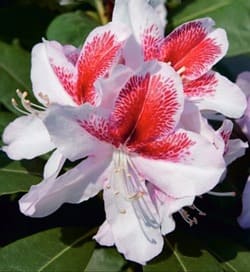




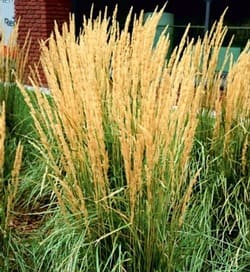
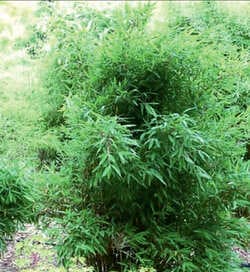
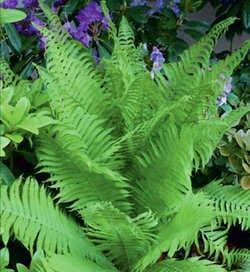




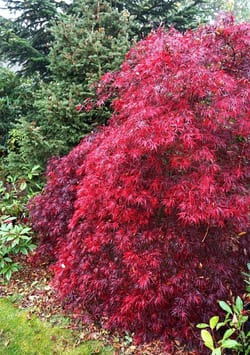
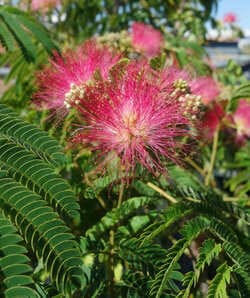
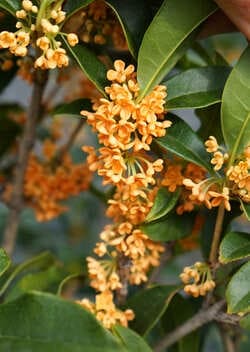



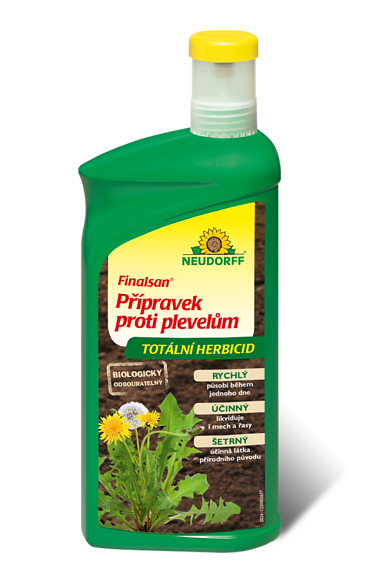


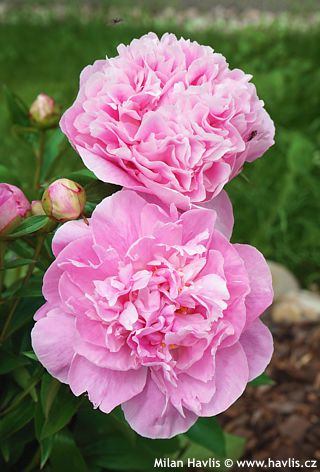
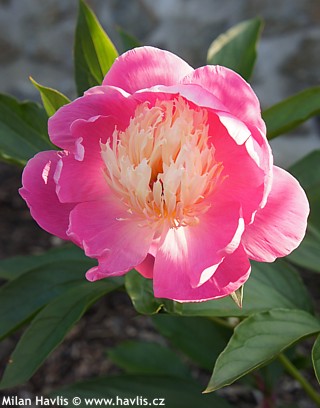

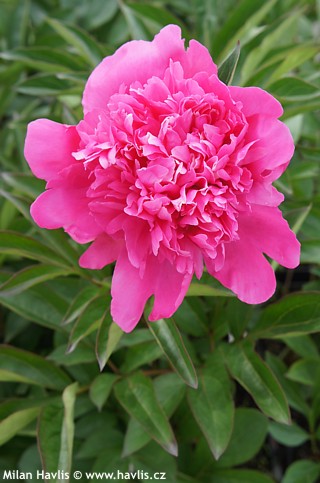

.jpg)

.jpg)


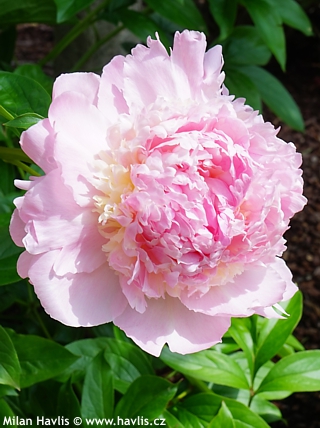


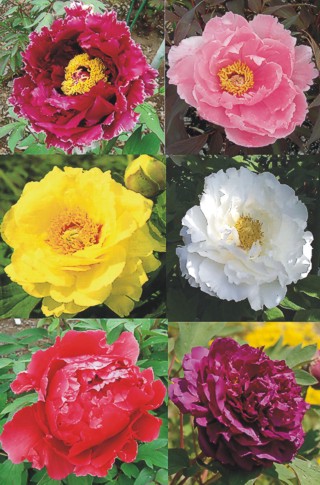


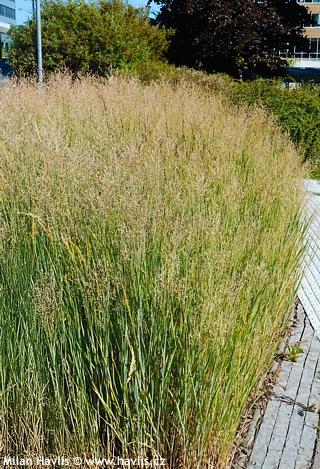

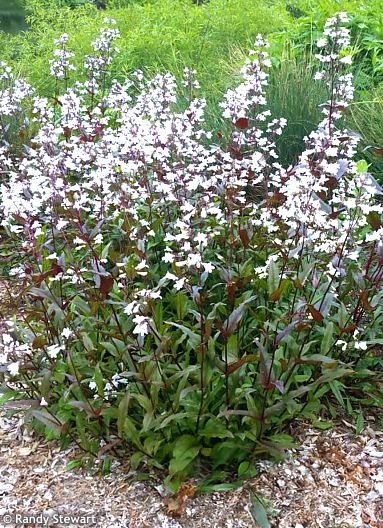
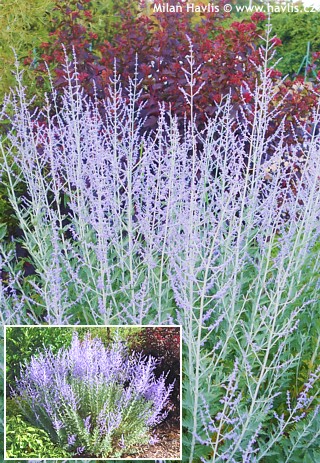
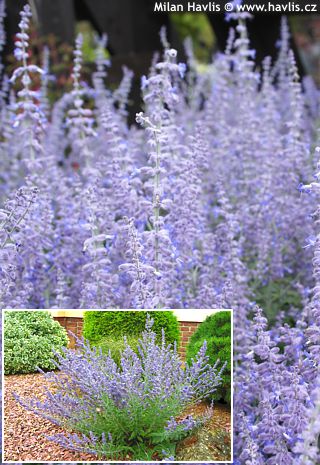
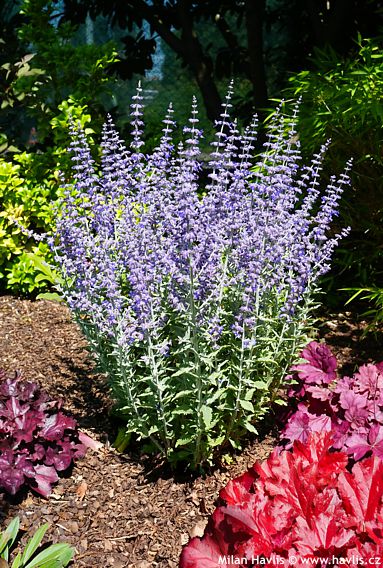
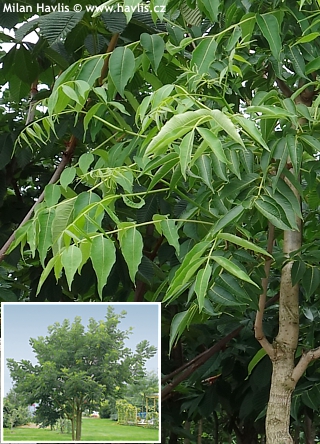
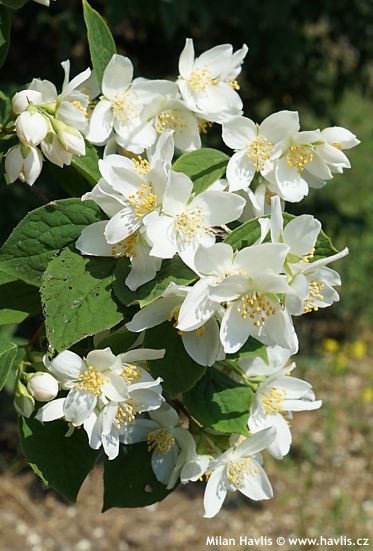
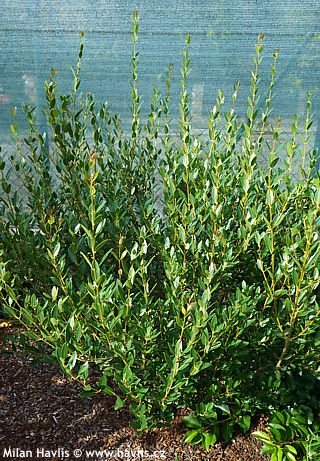
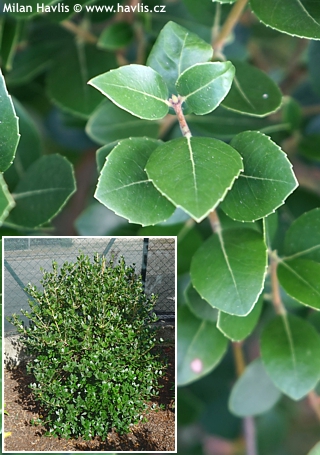
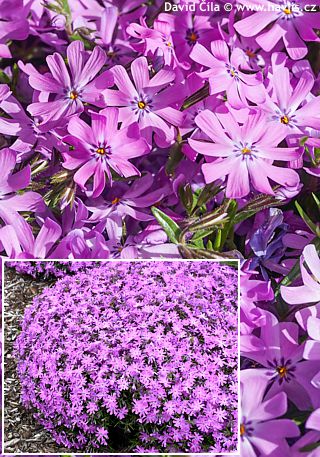
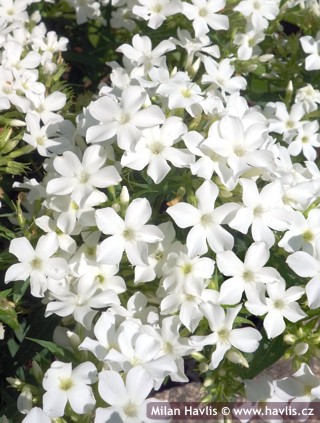
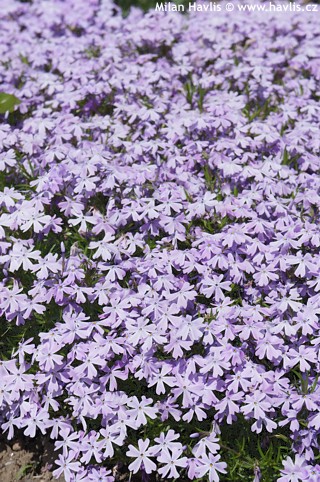
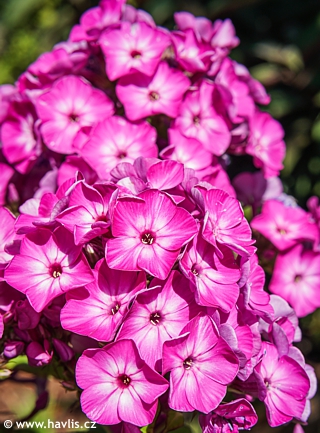
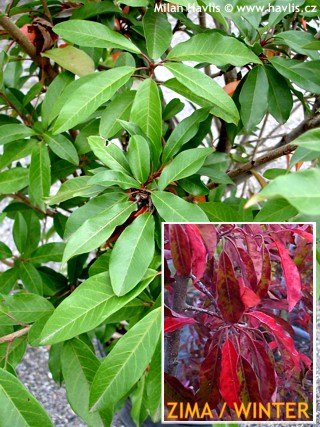



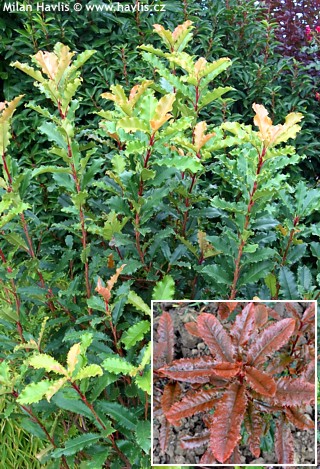

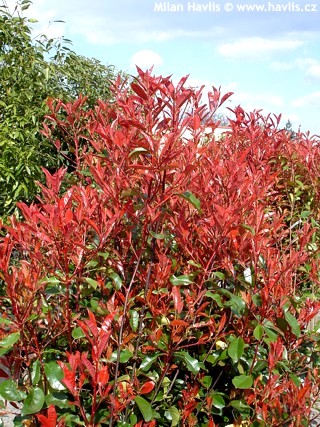

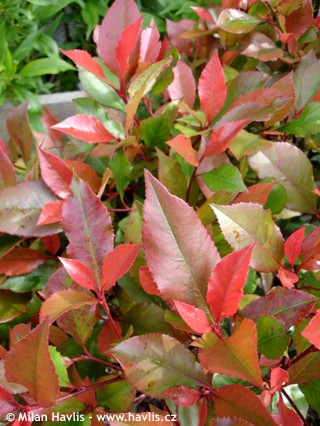

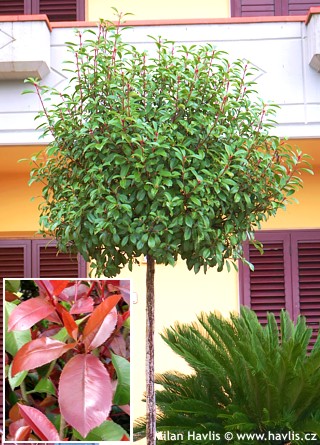
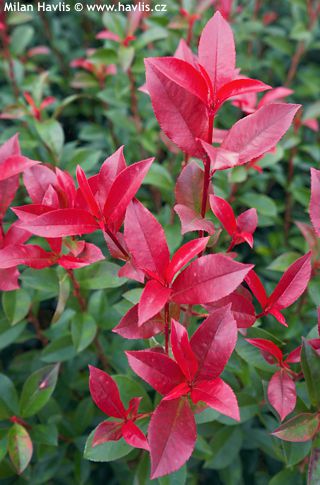
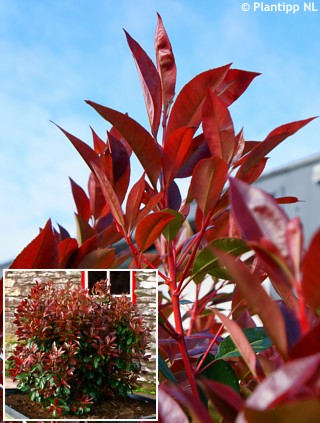

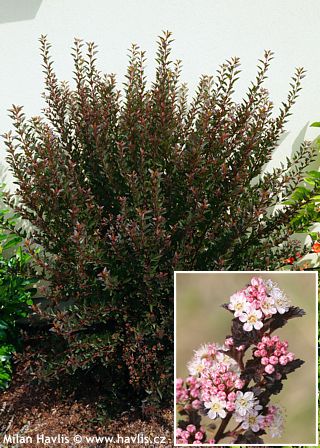

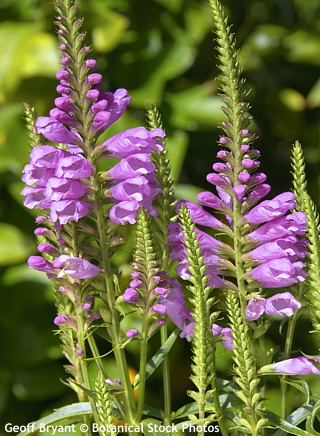


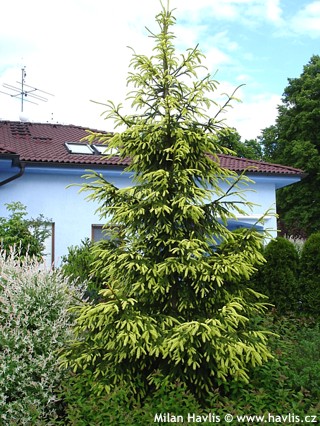
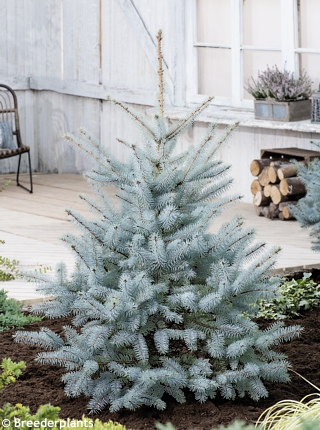
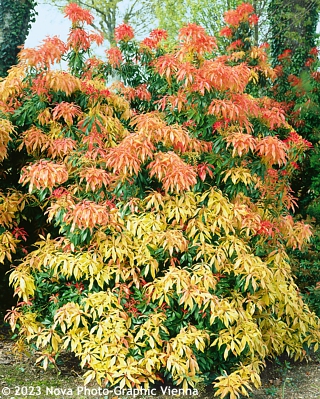
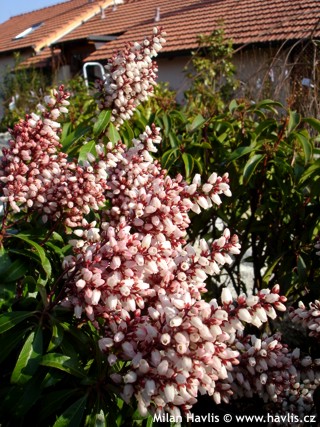
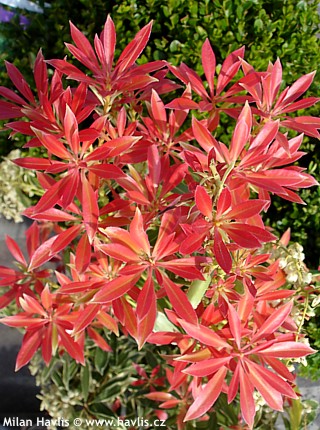

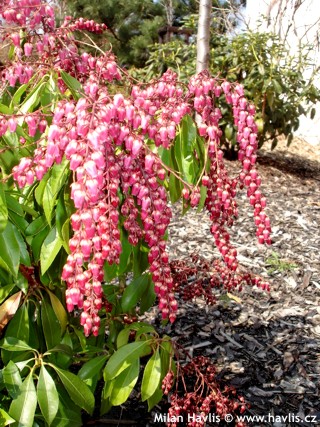
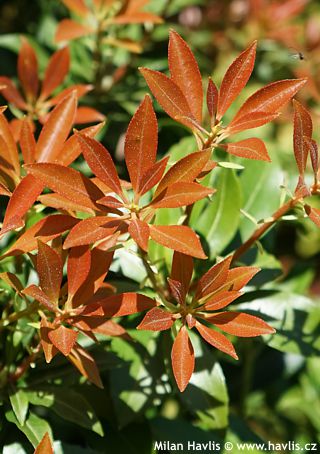
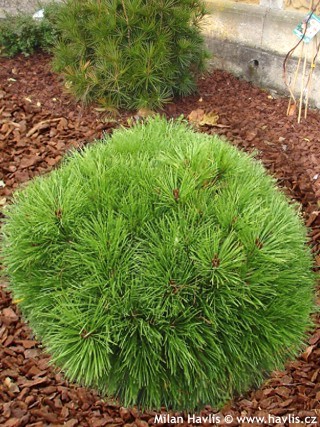
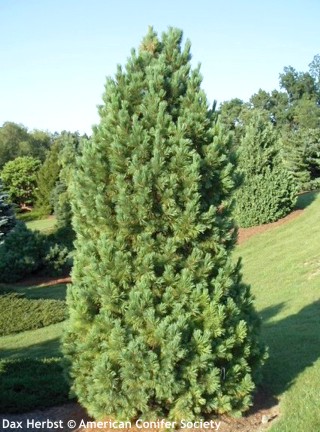
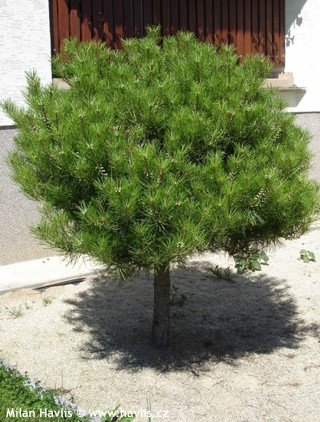

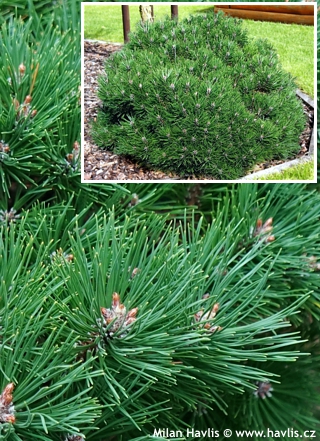






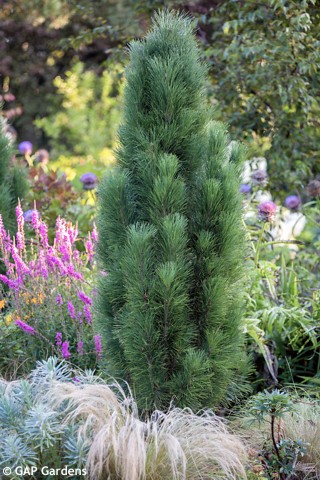



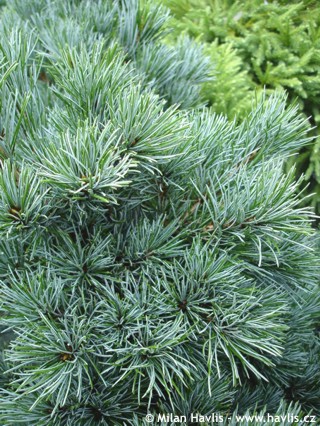


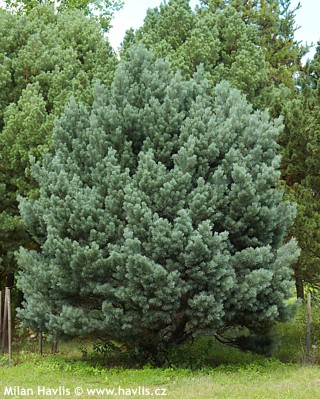
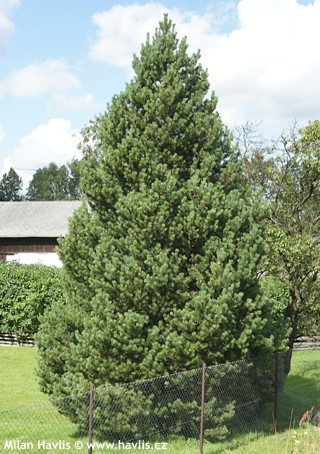

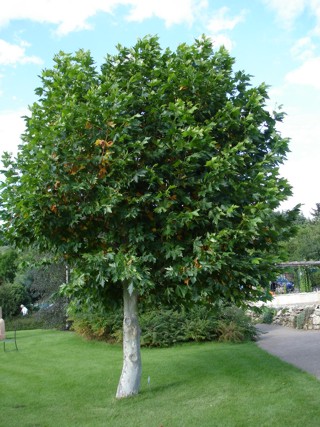
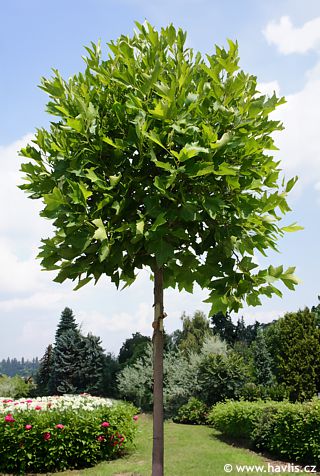
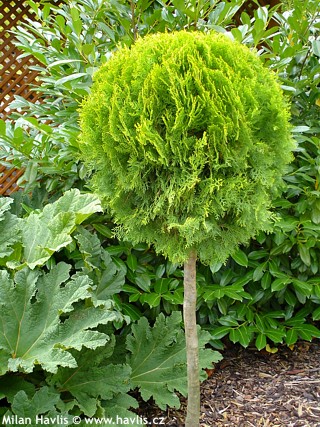
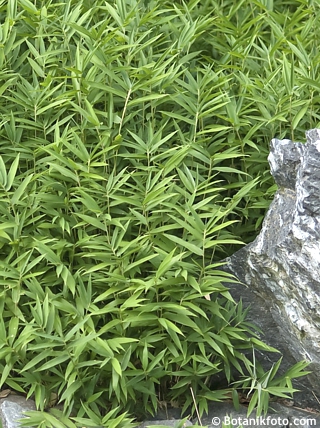

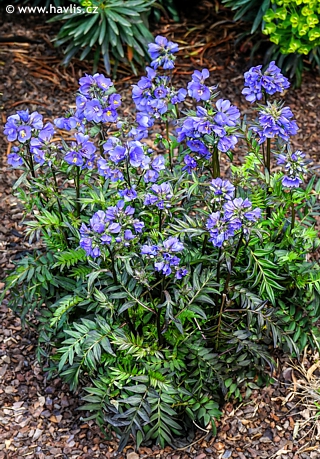

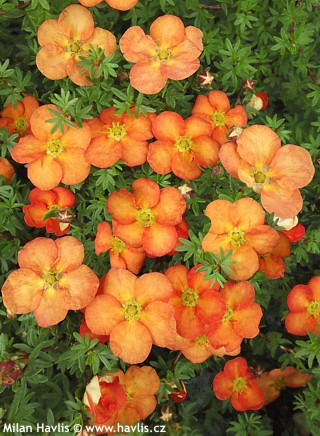

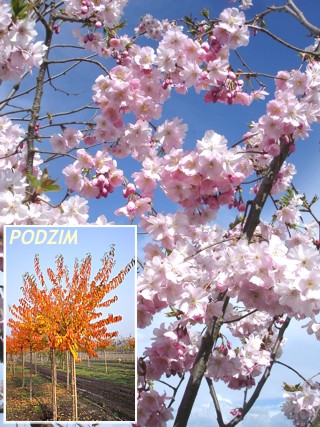

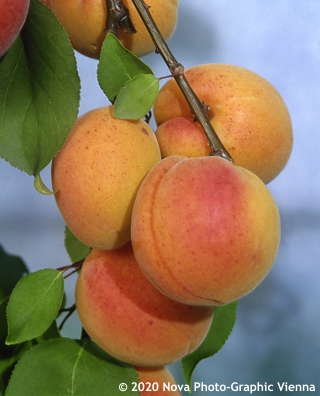

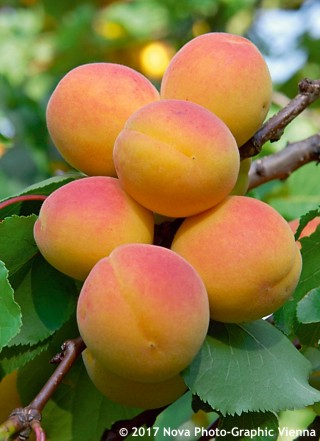
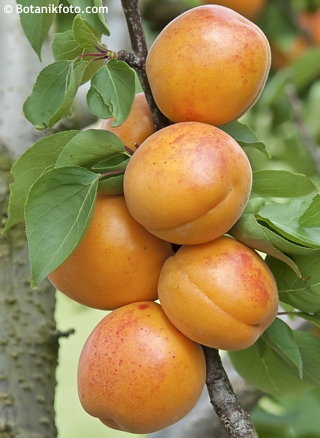



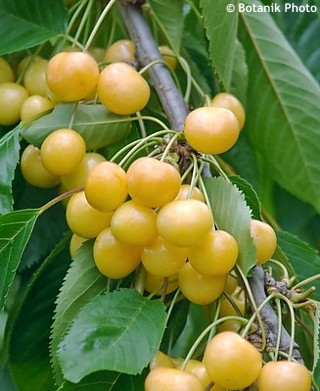

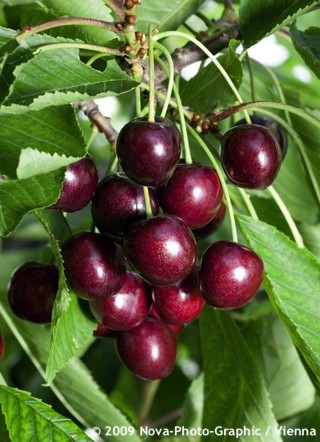
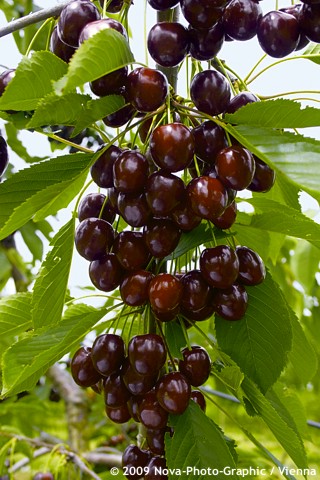
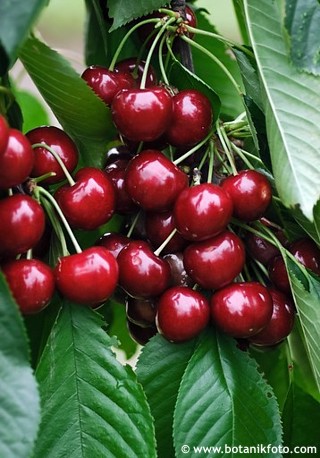
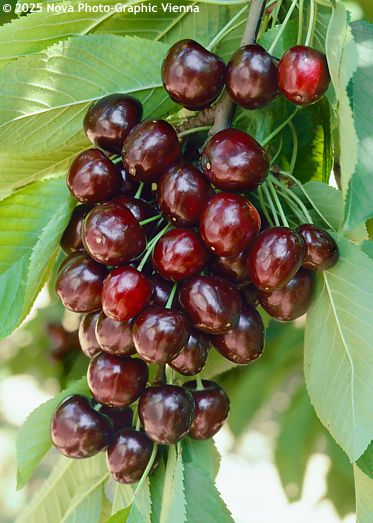
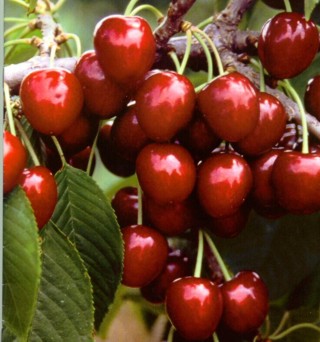
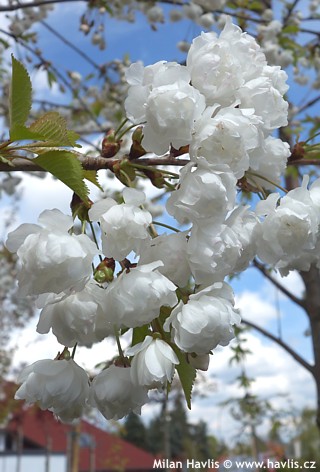


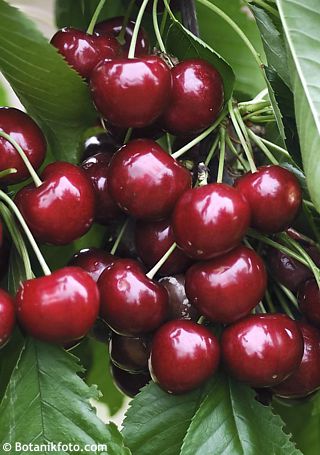

.jpg)
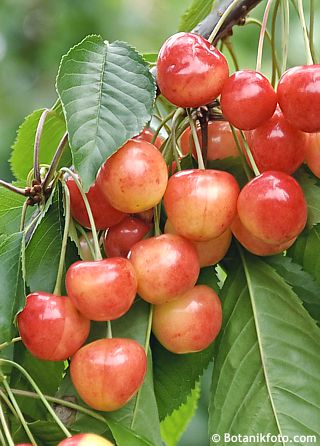
.jpg)
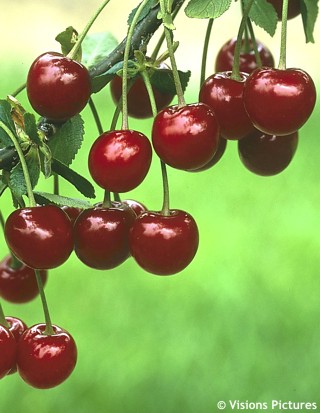
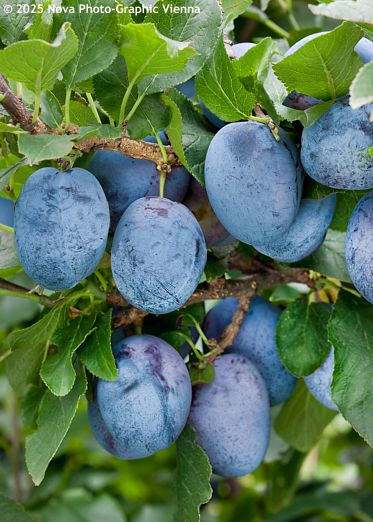
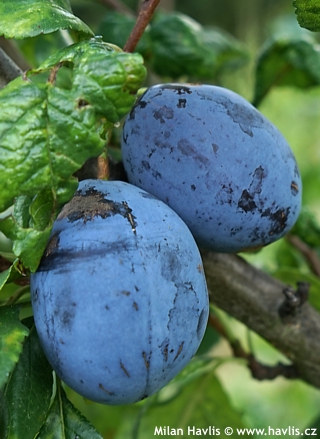

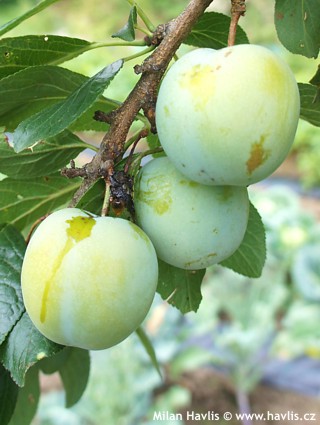
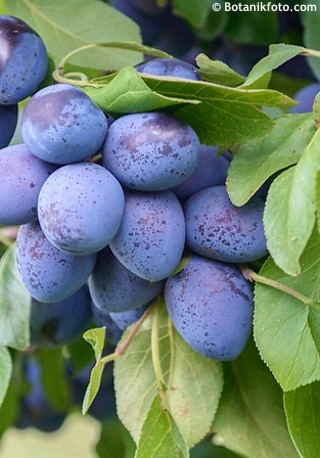



.jpg)
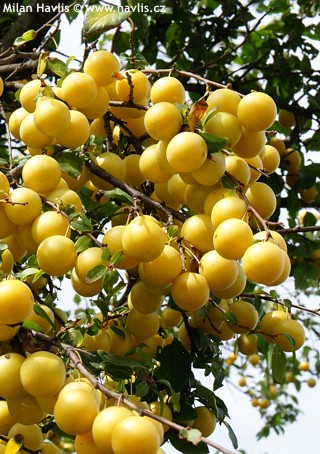

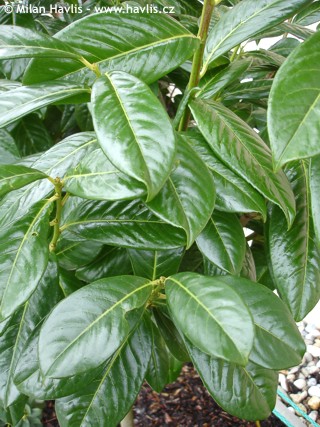
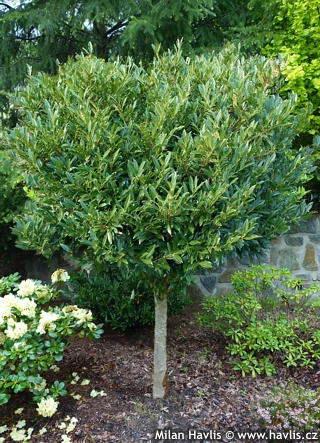
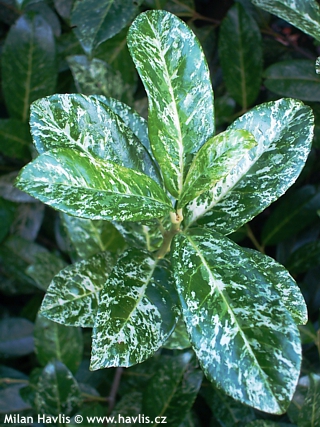
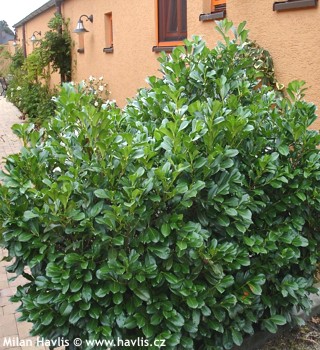
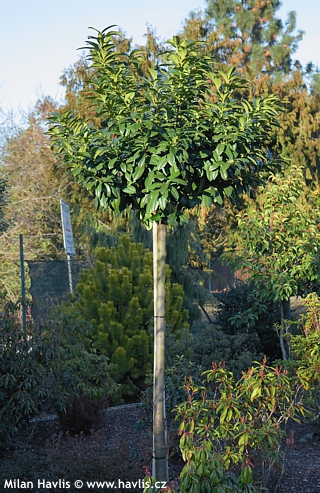
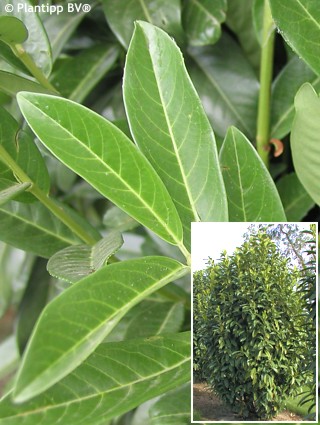
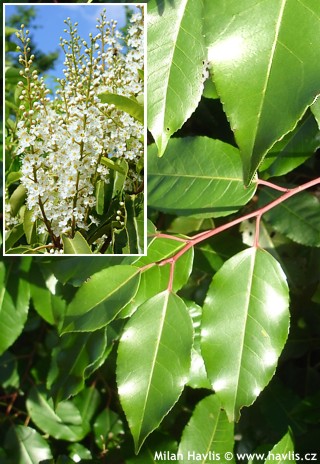

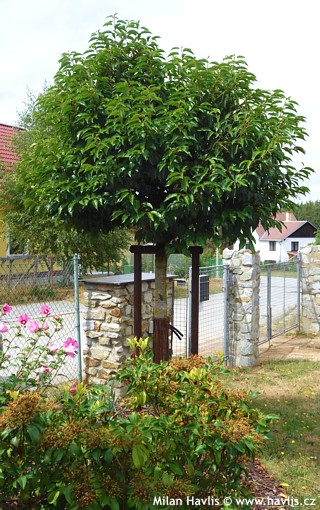

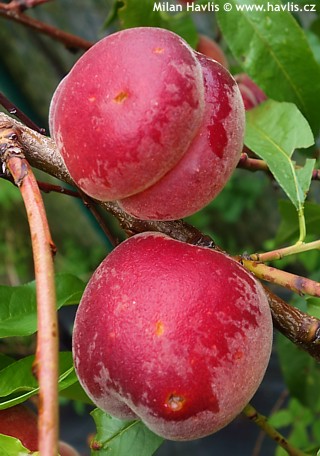
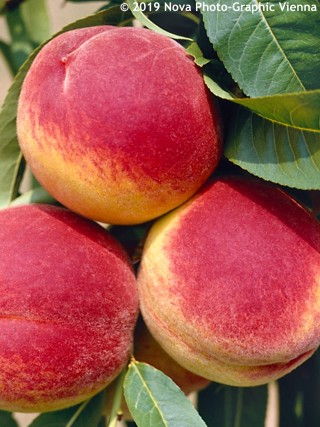
.jpg)
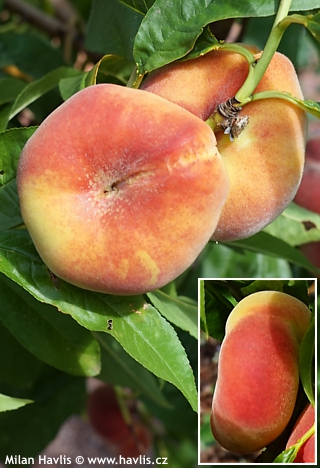

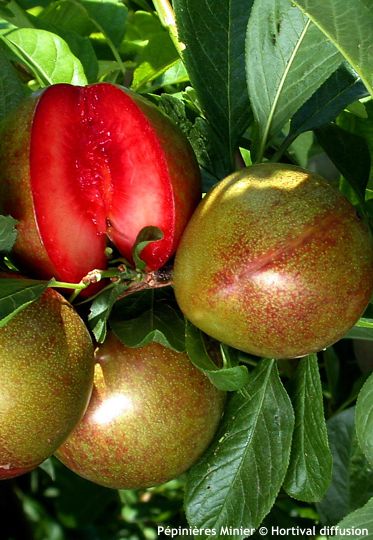
.jpg)
.jpg)
.jpg)
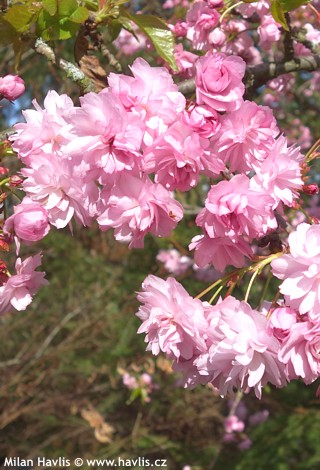
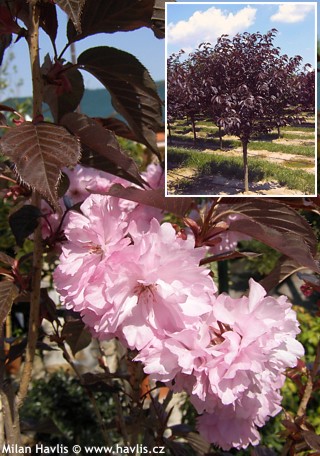
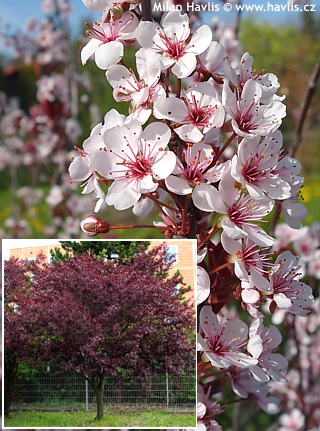
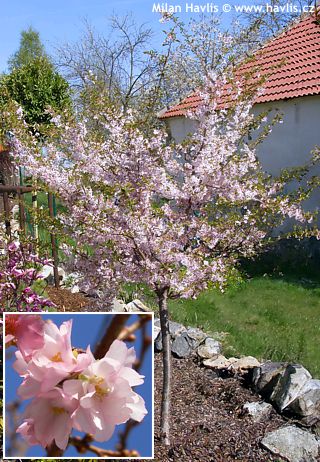
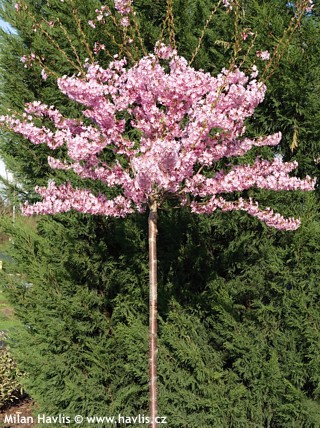
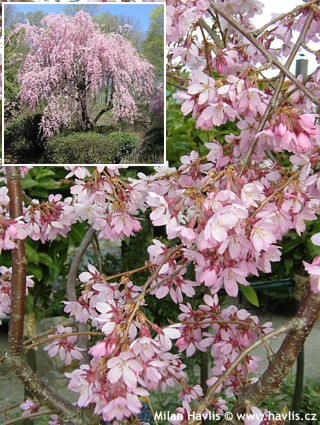

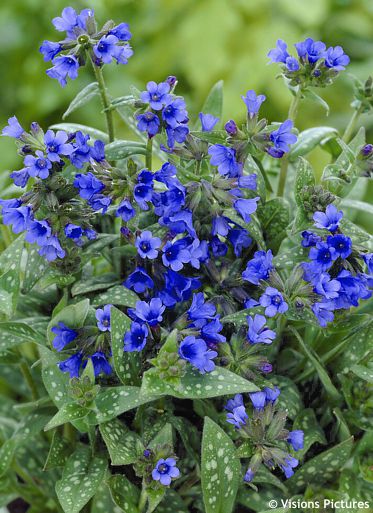
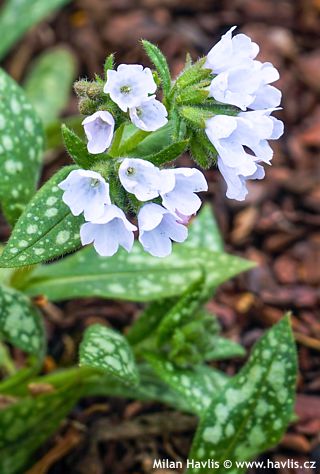

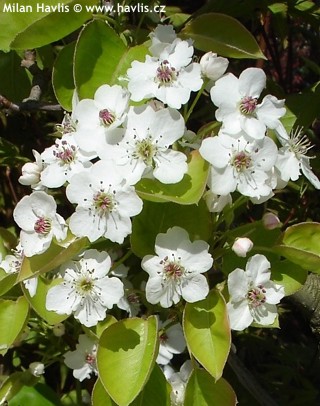
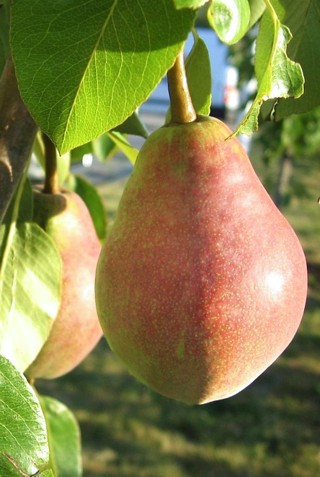
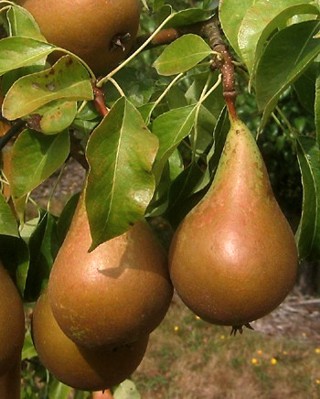
.jpg)
